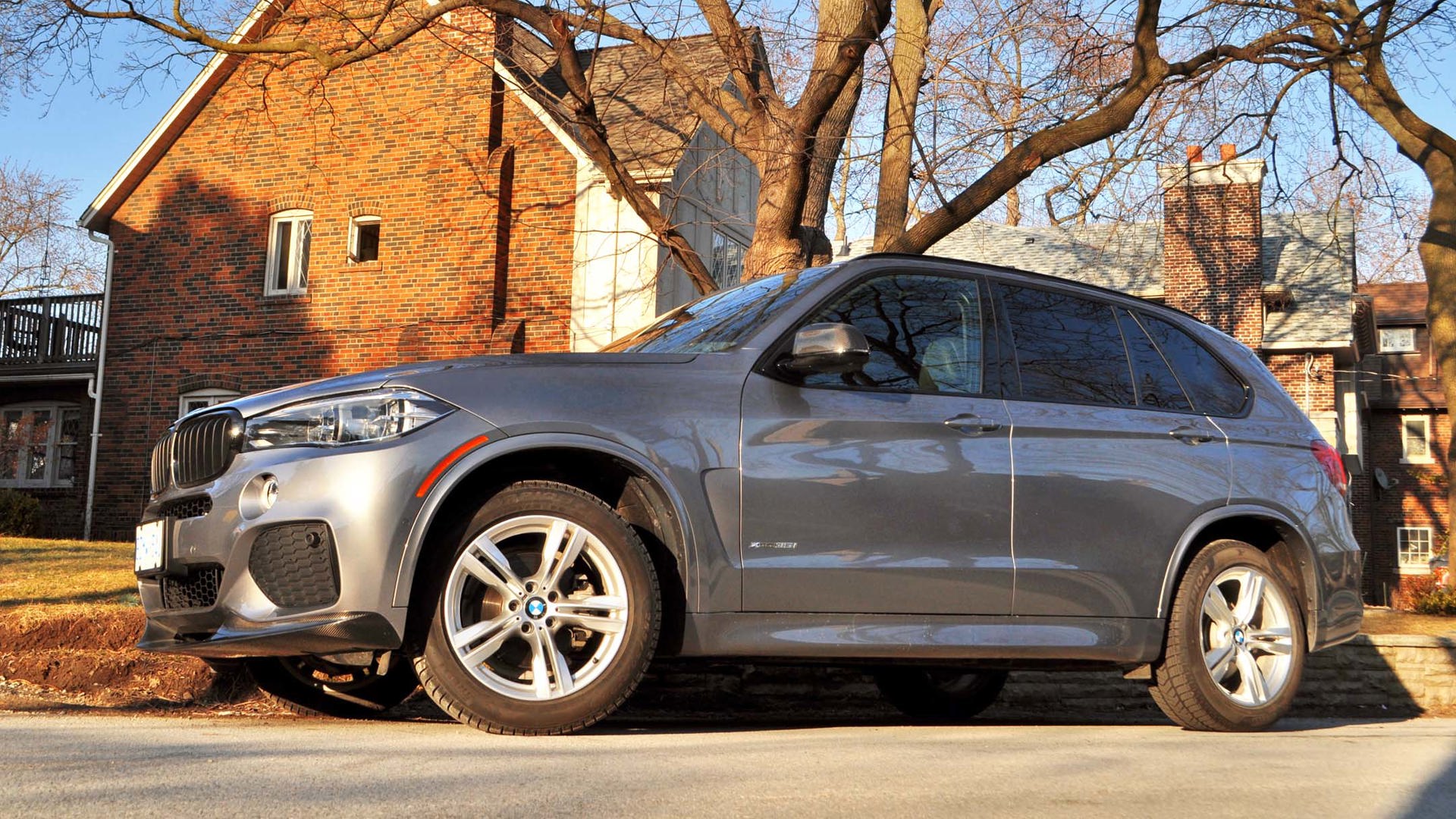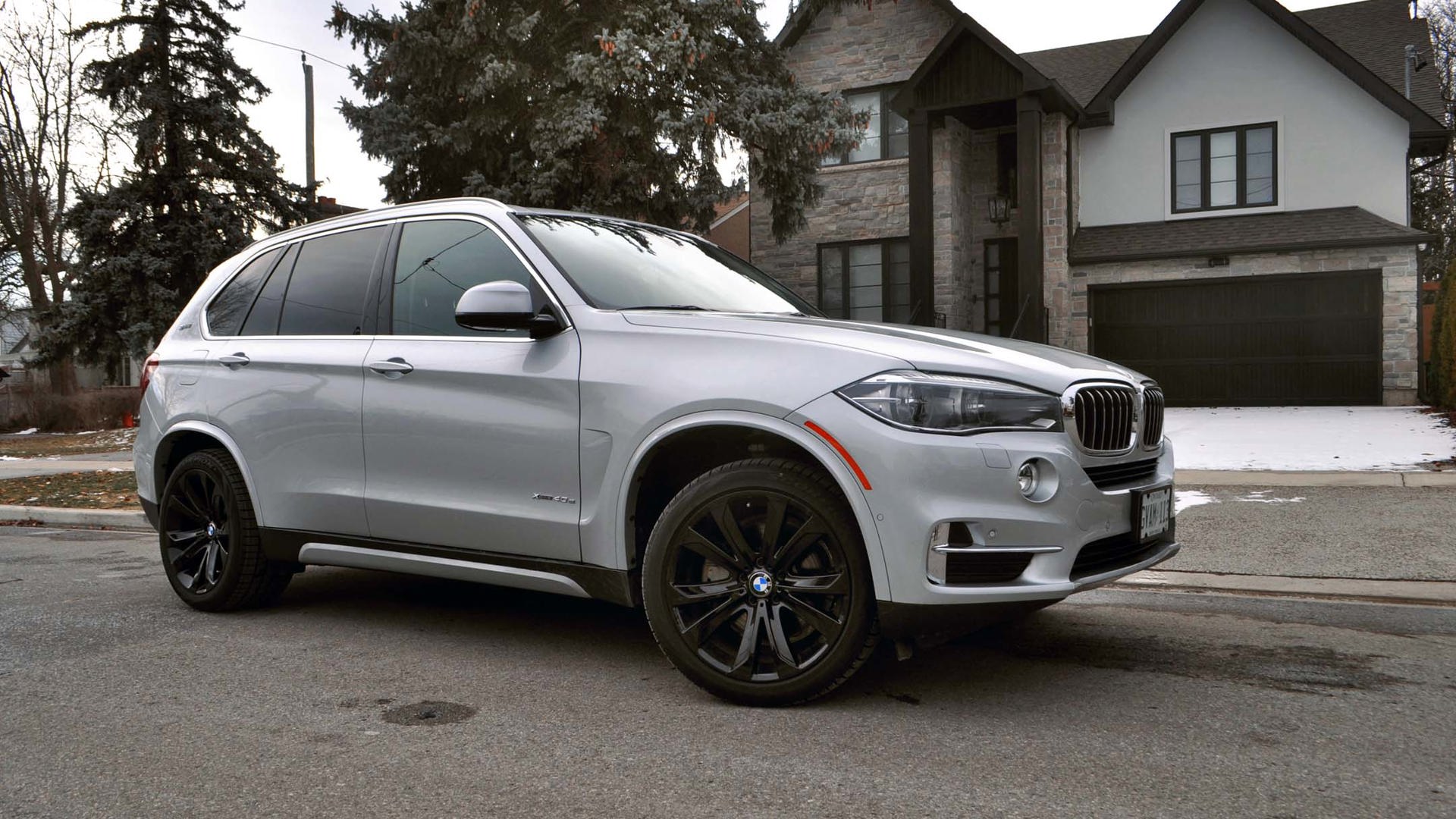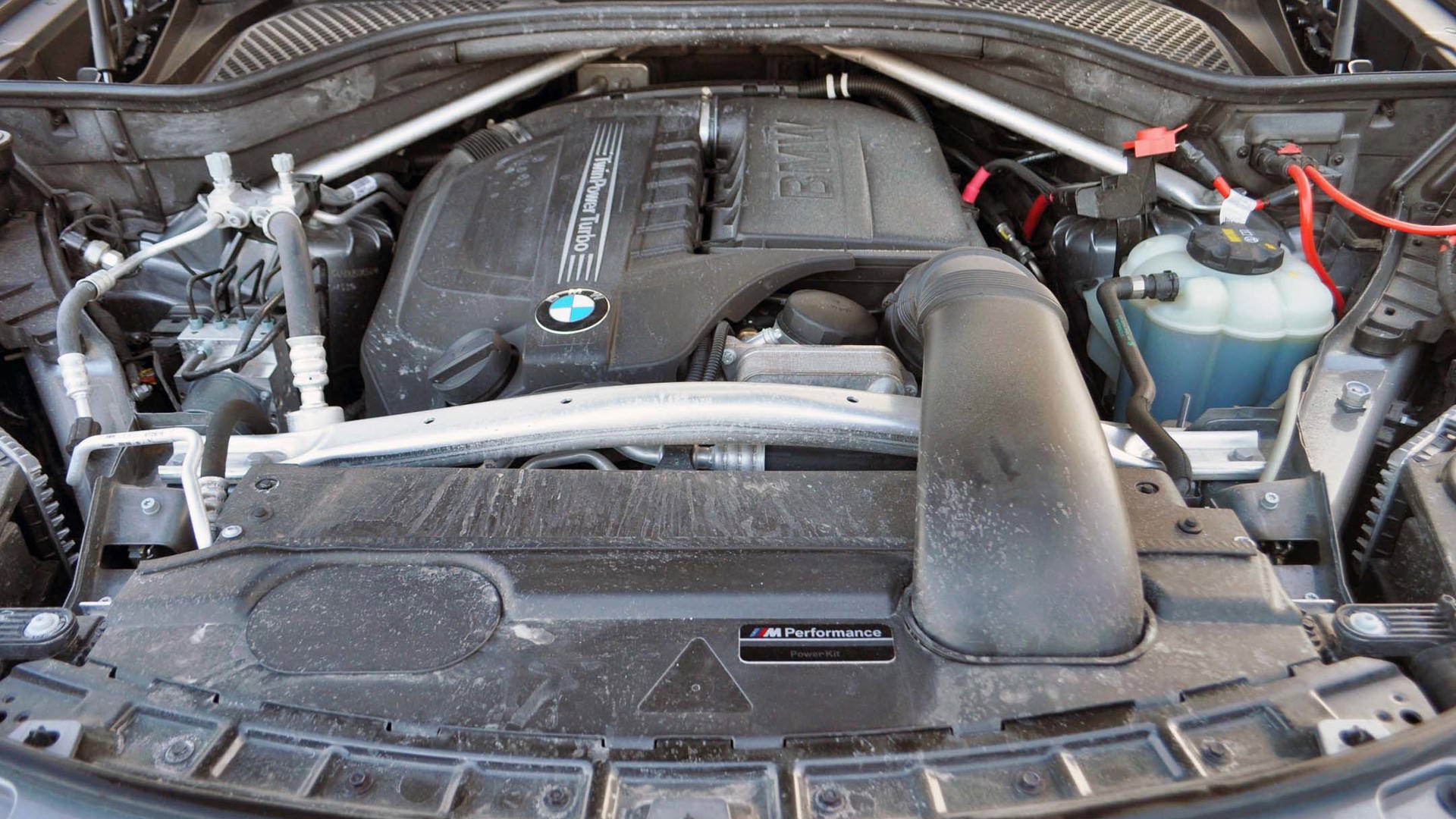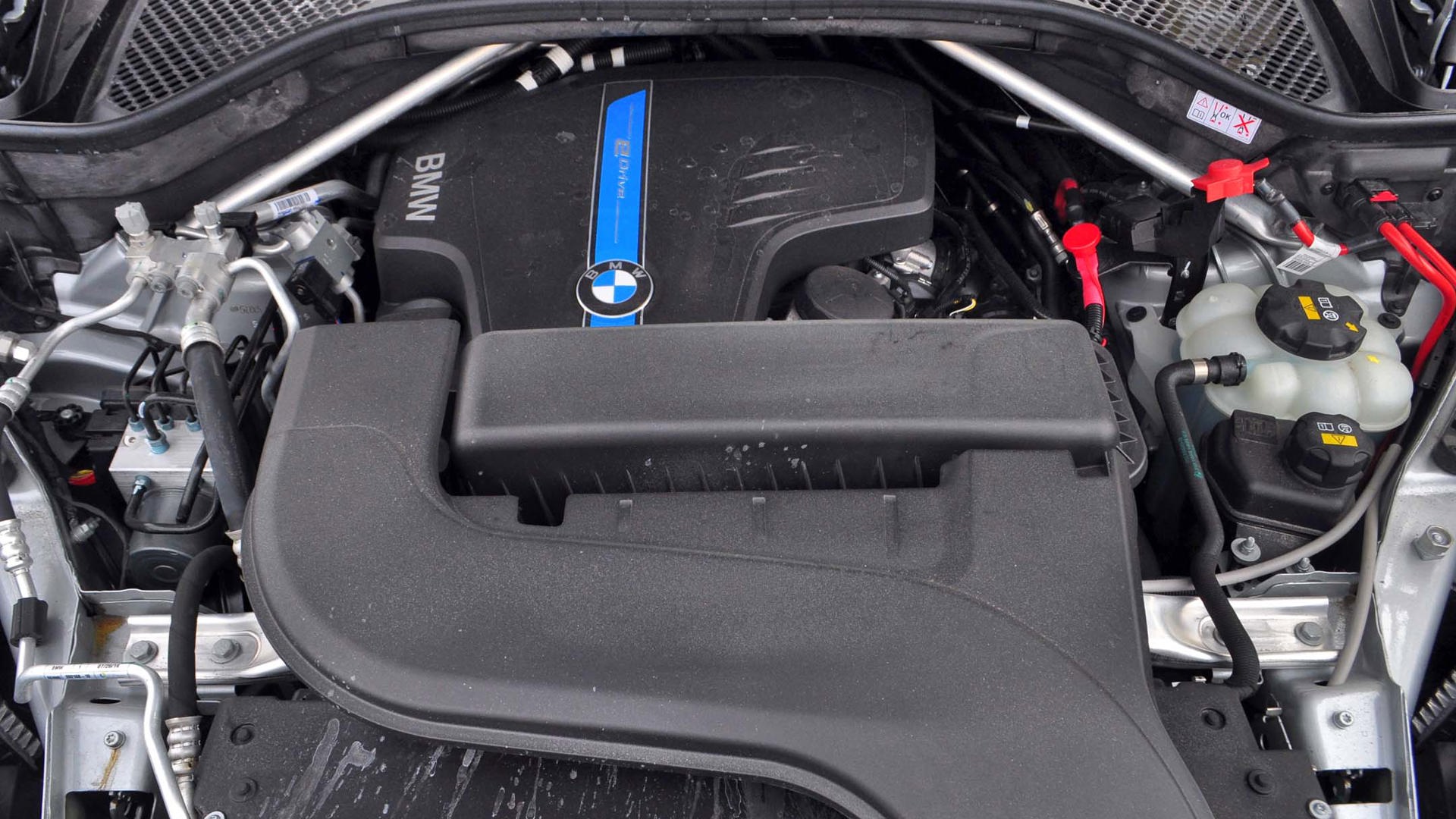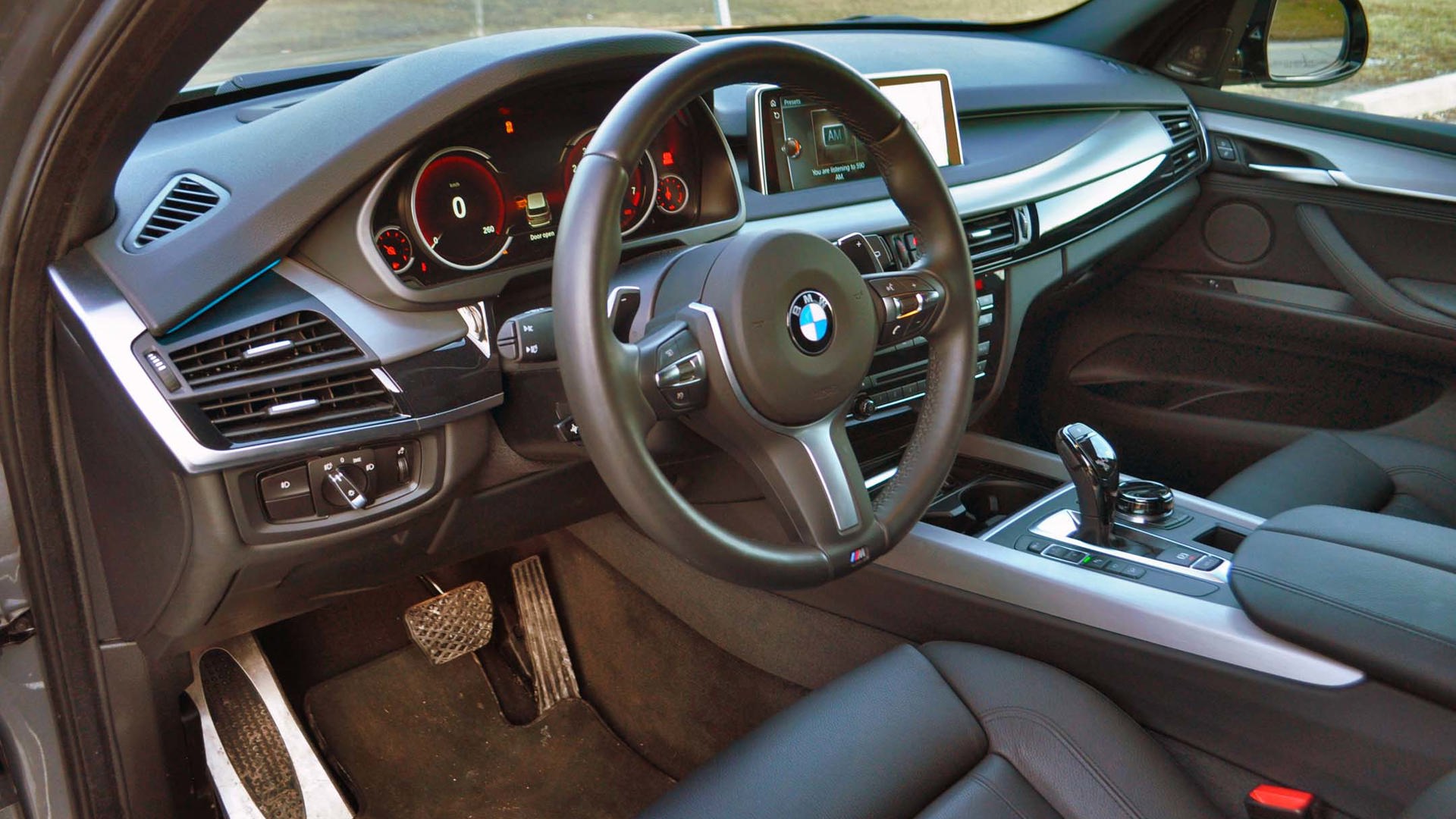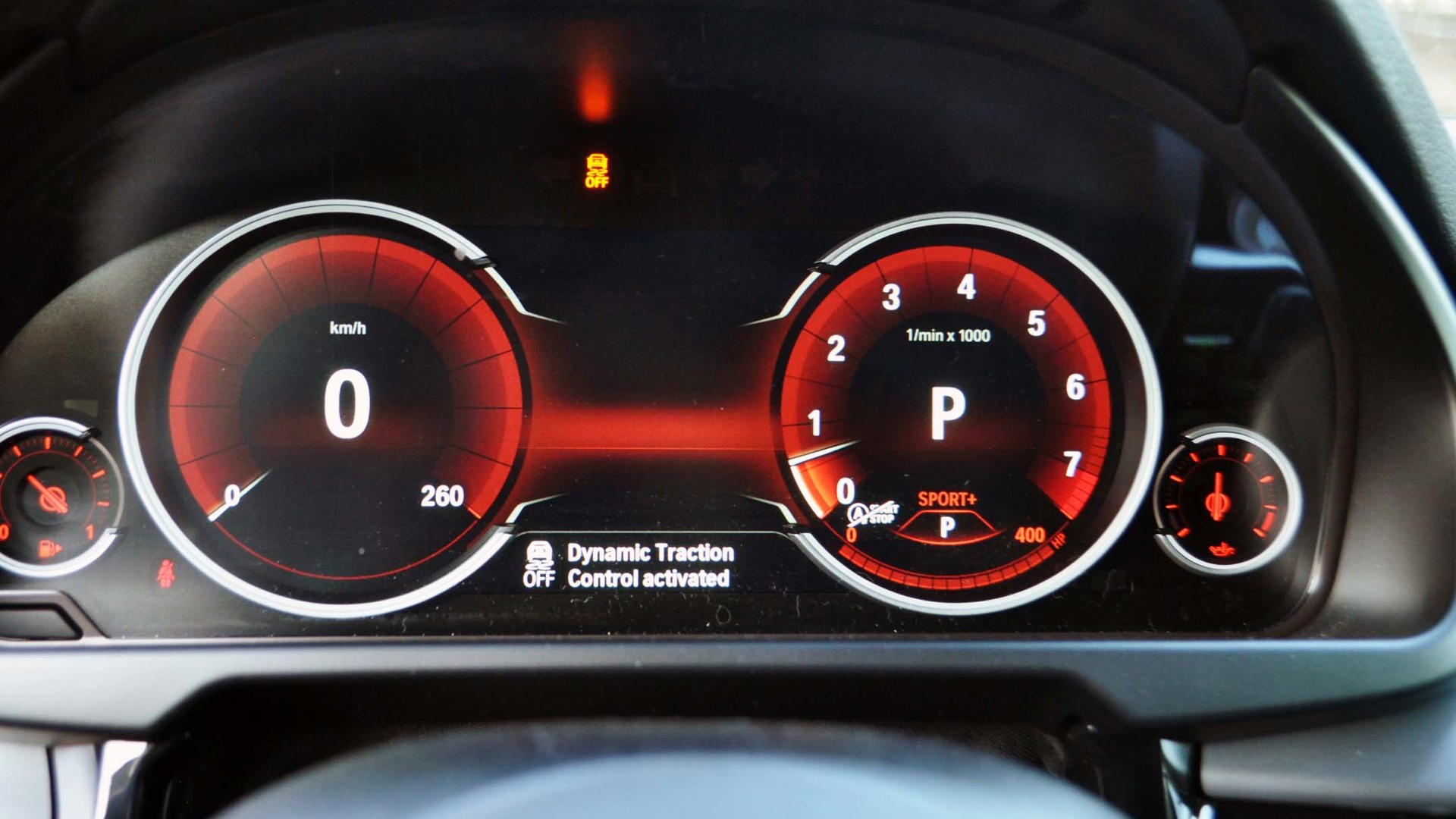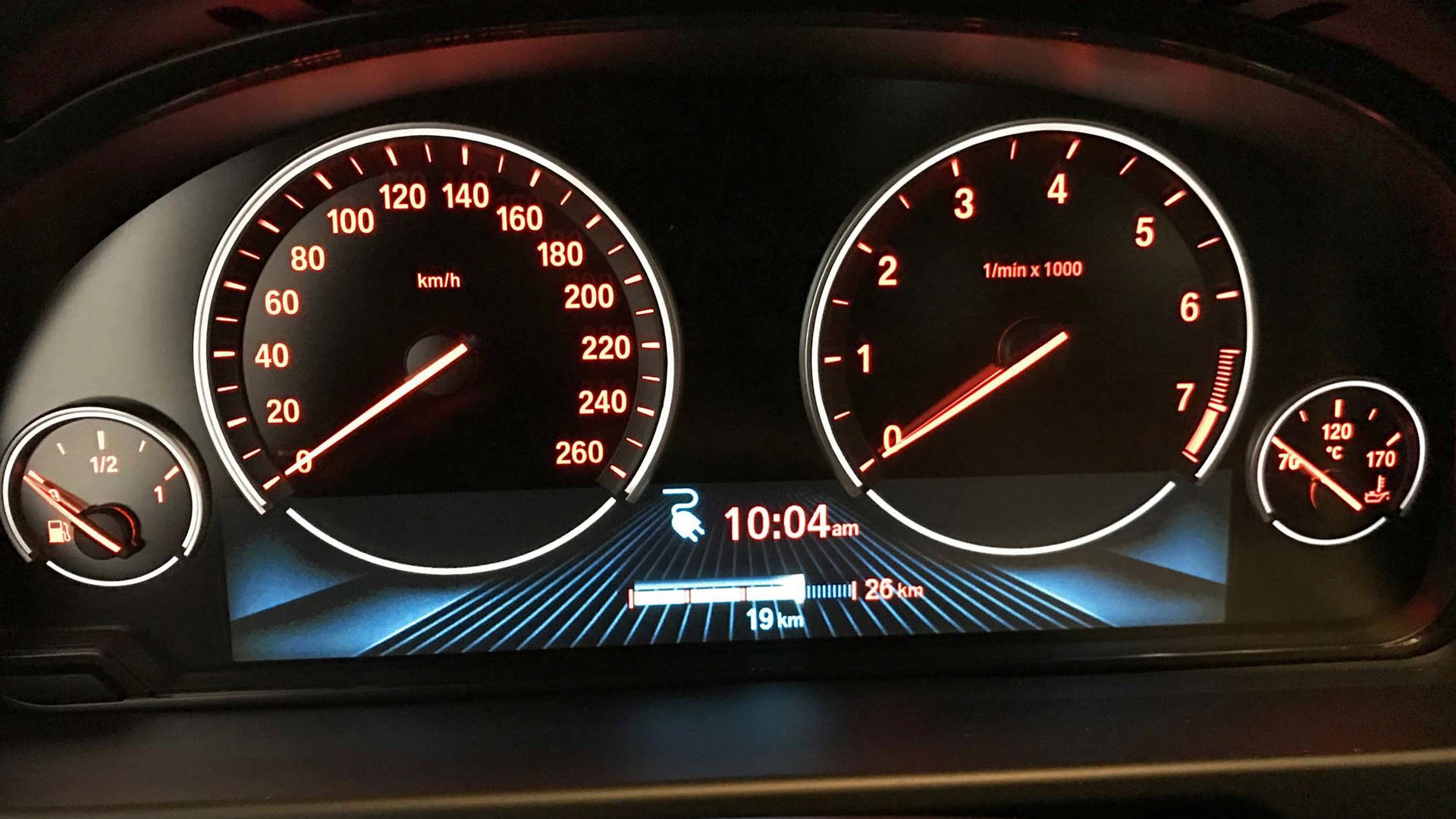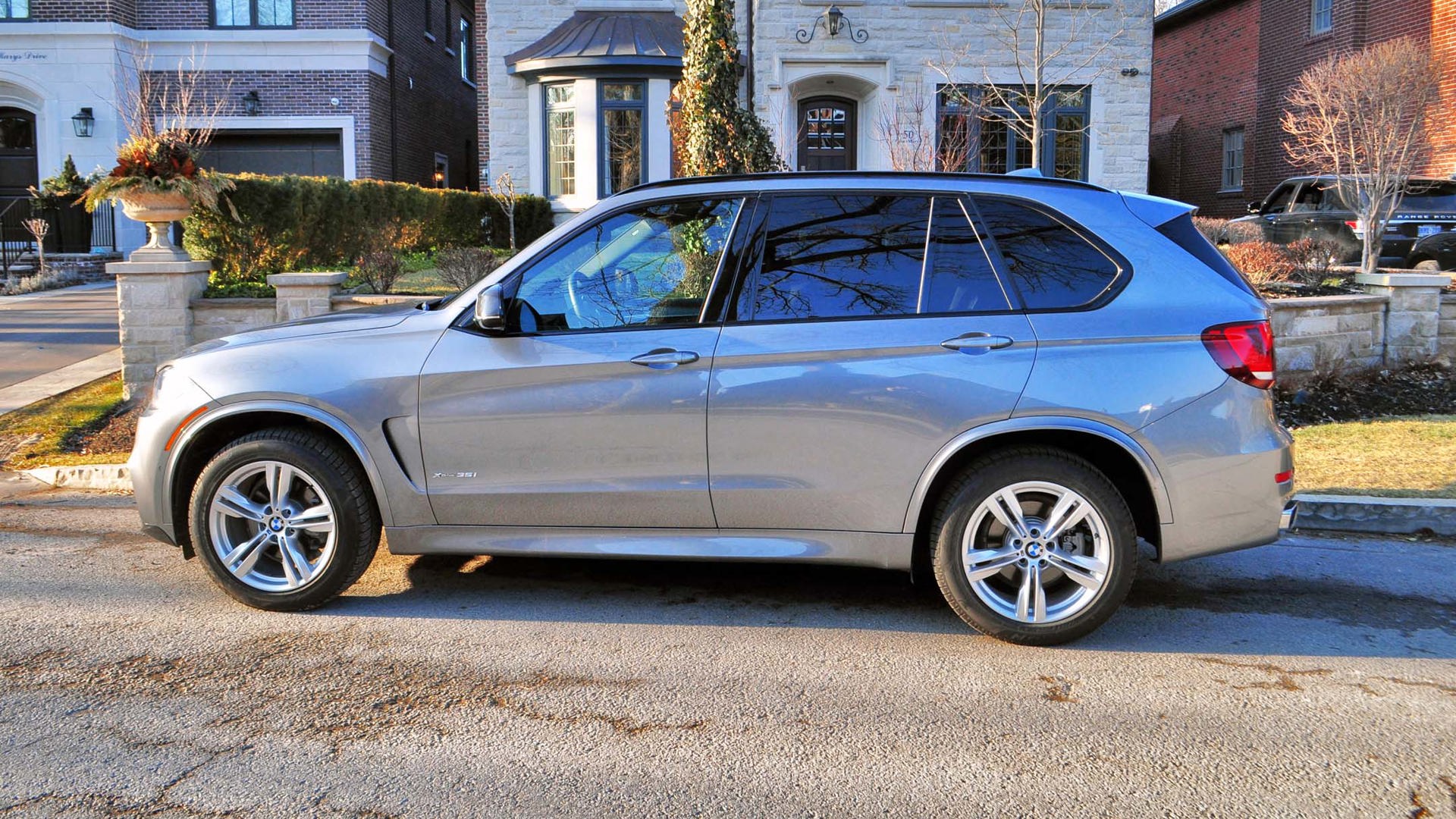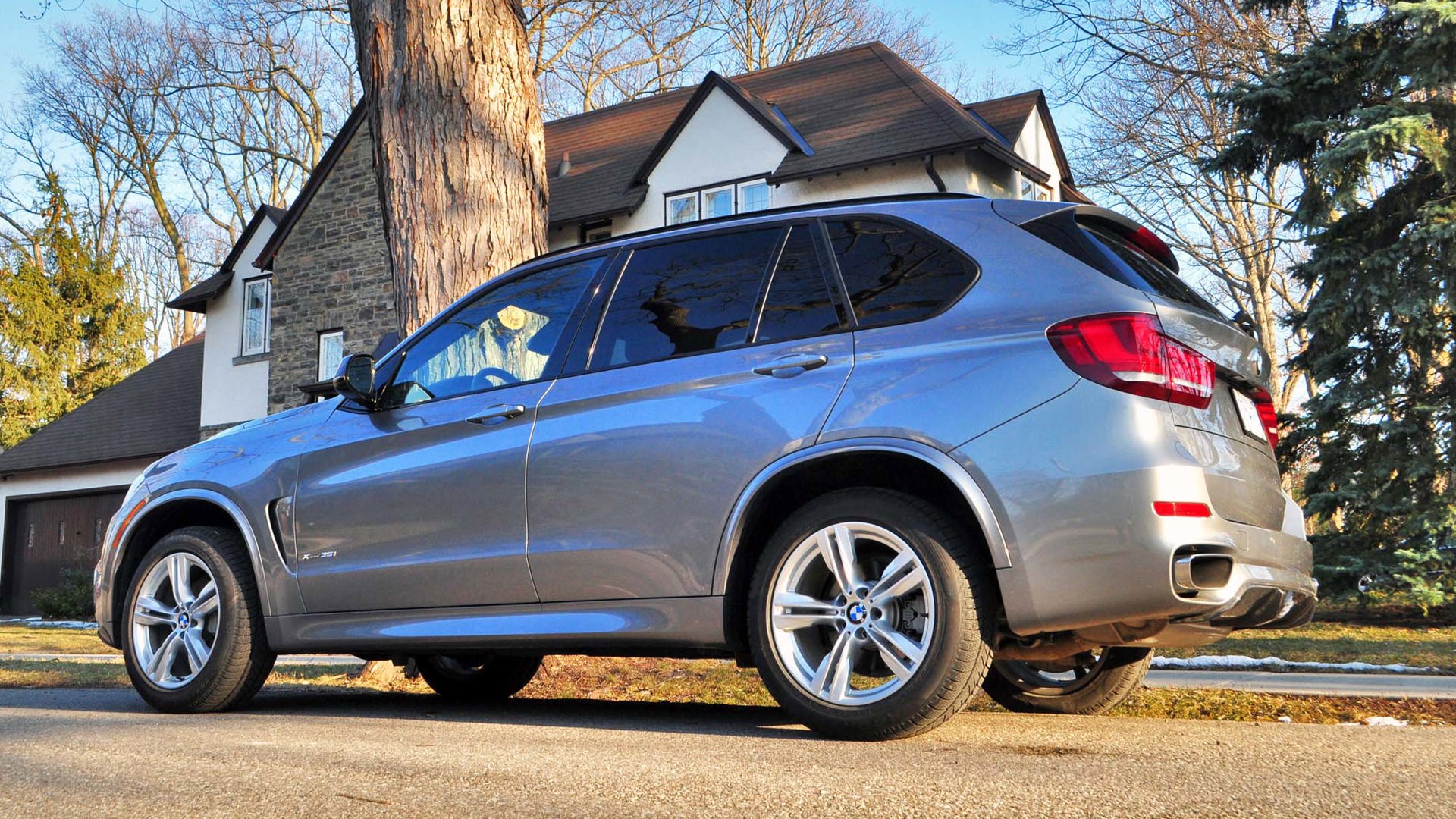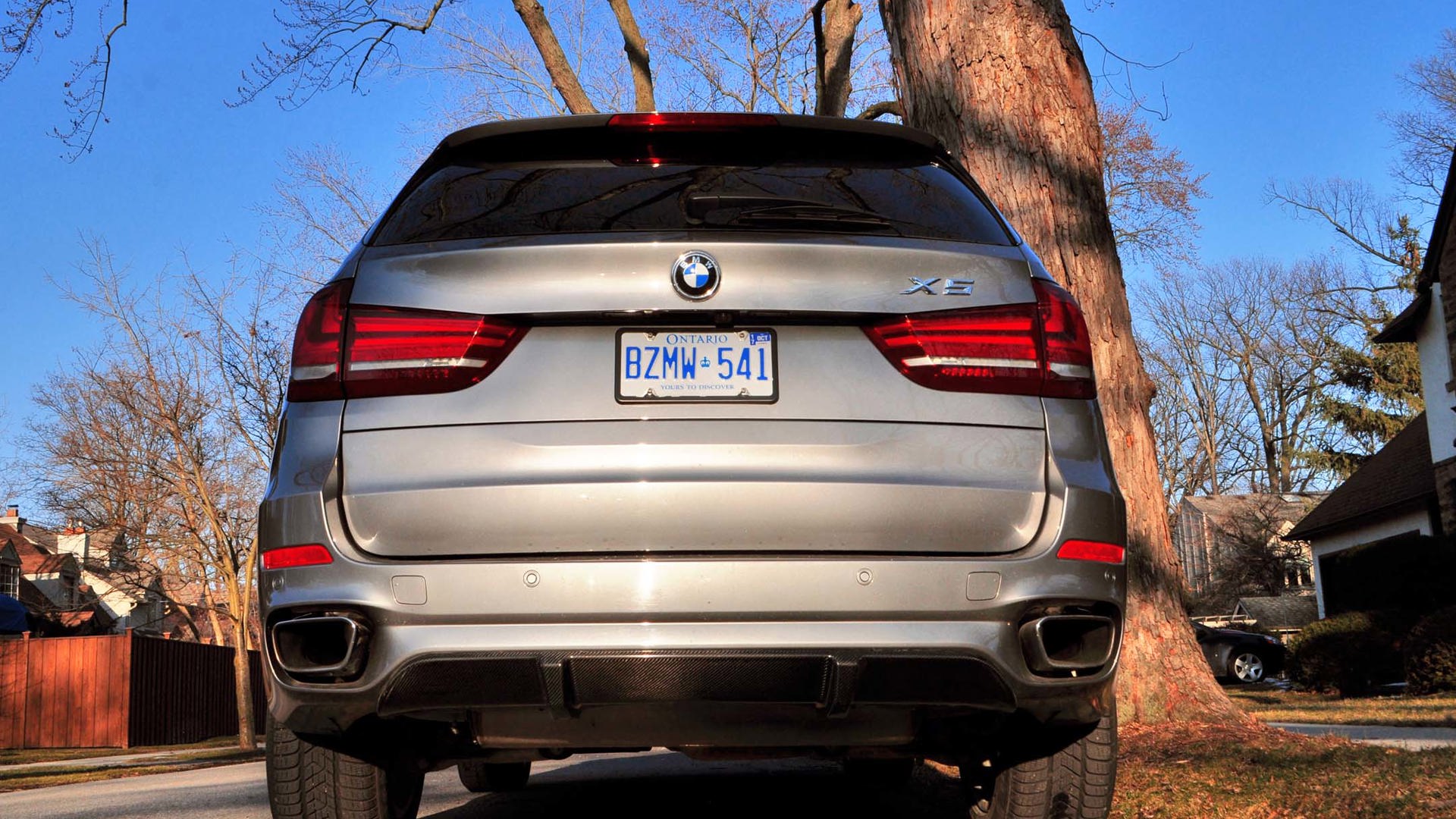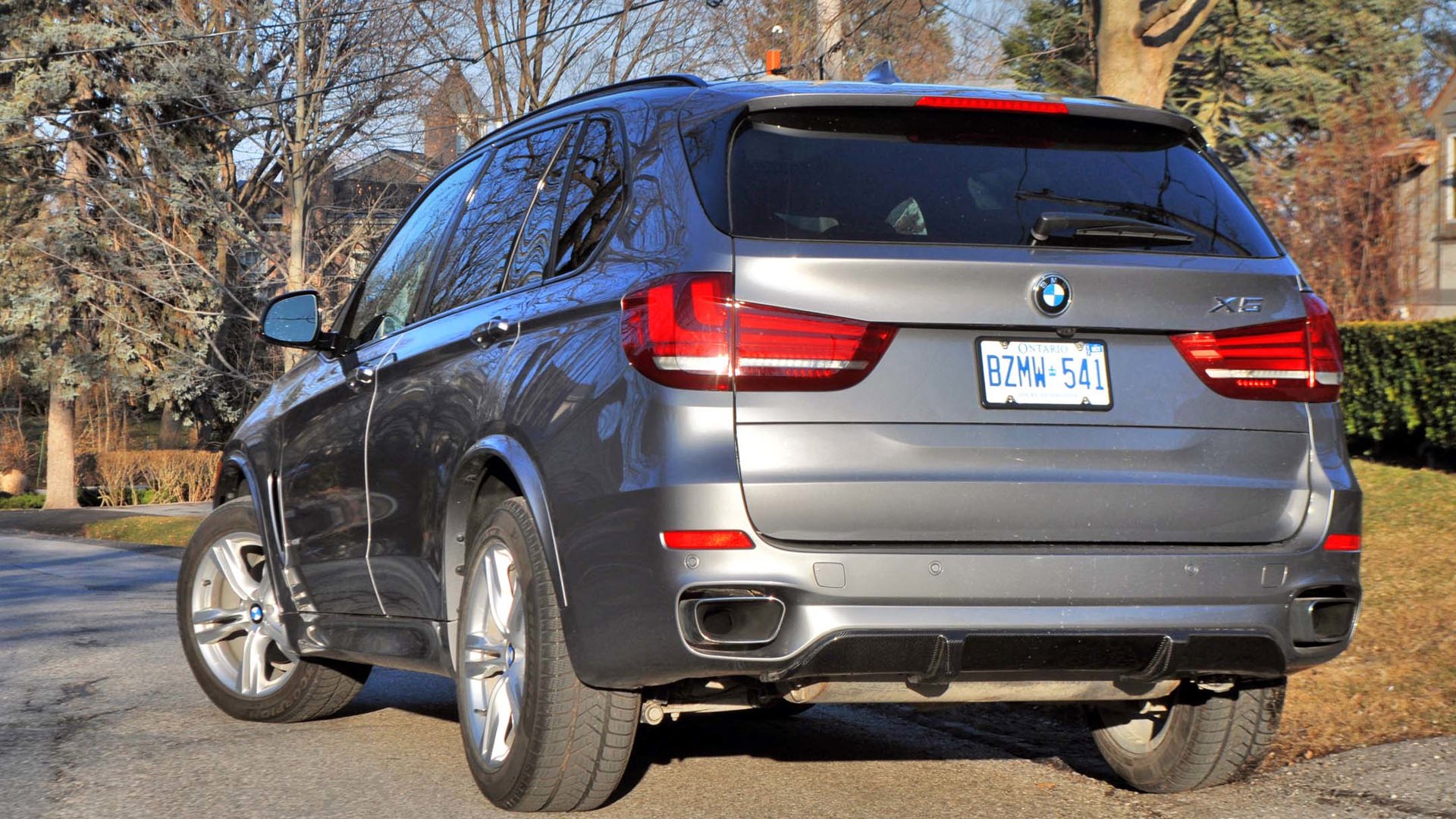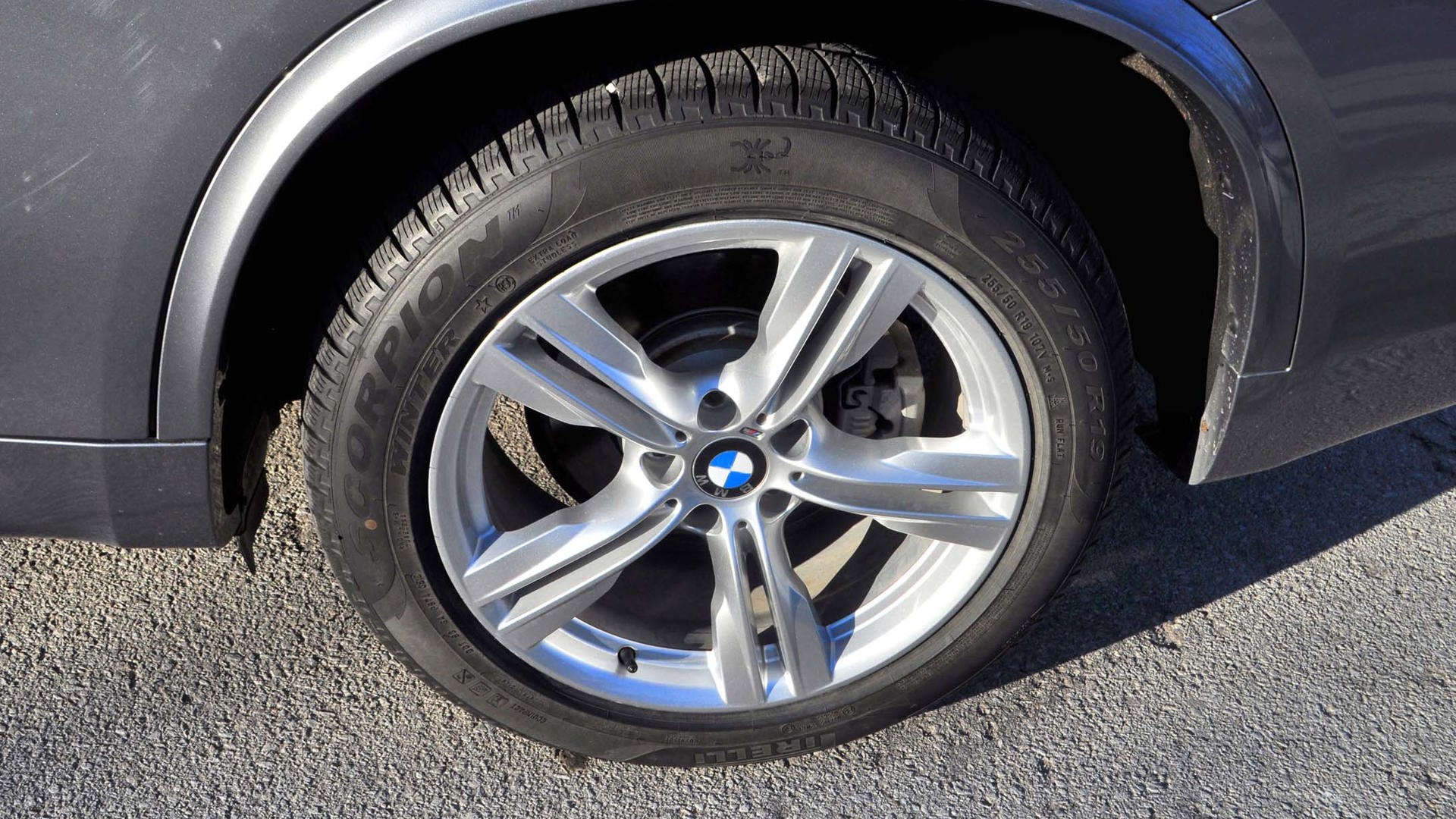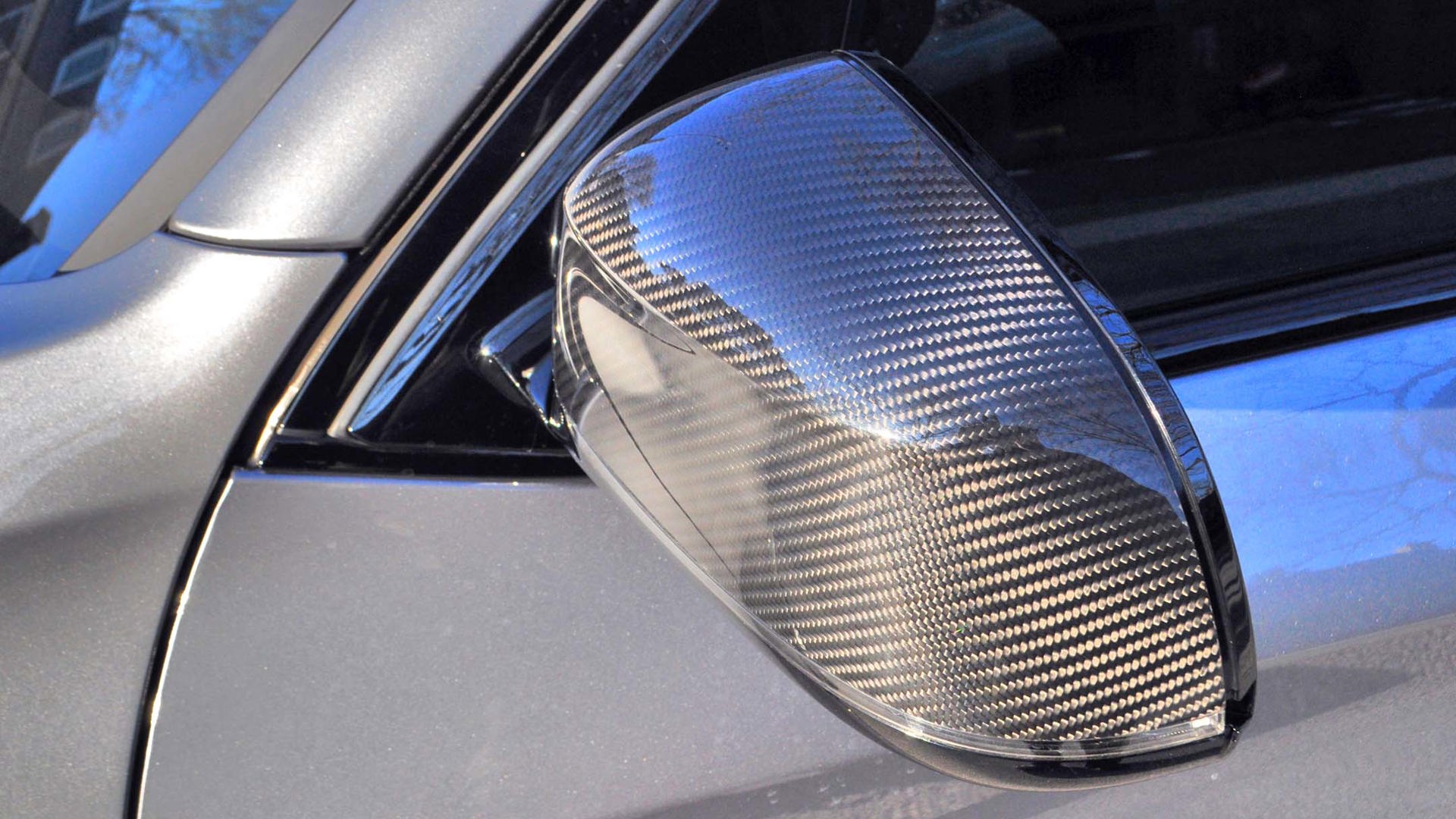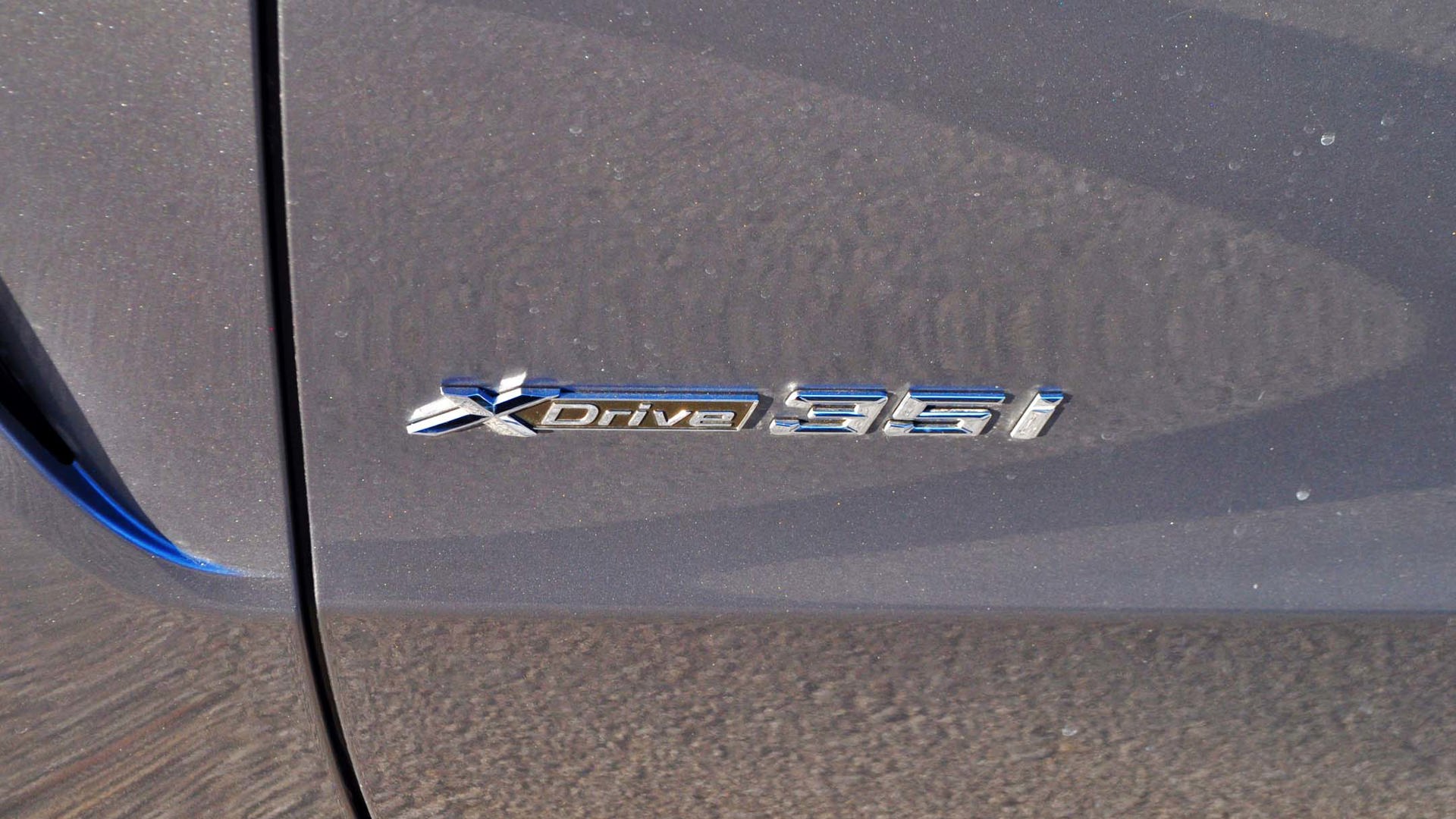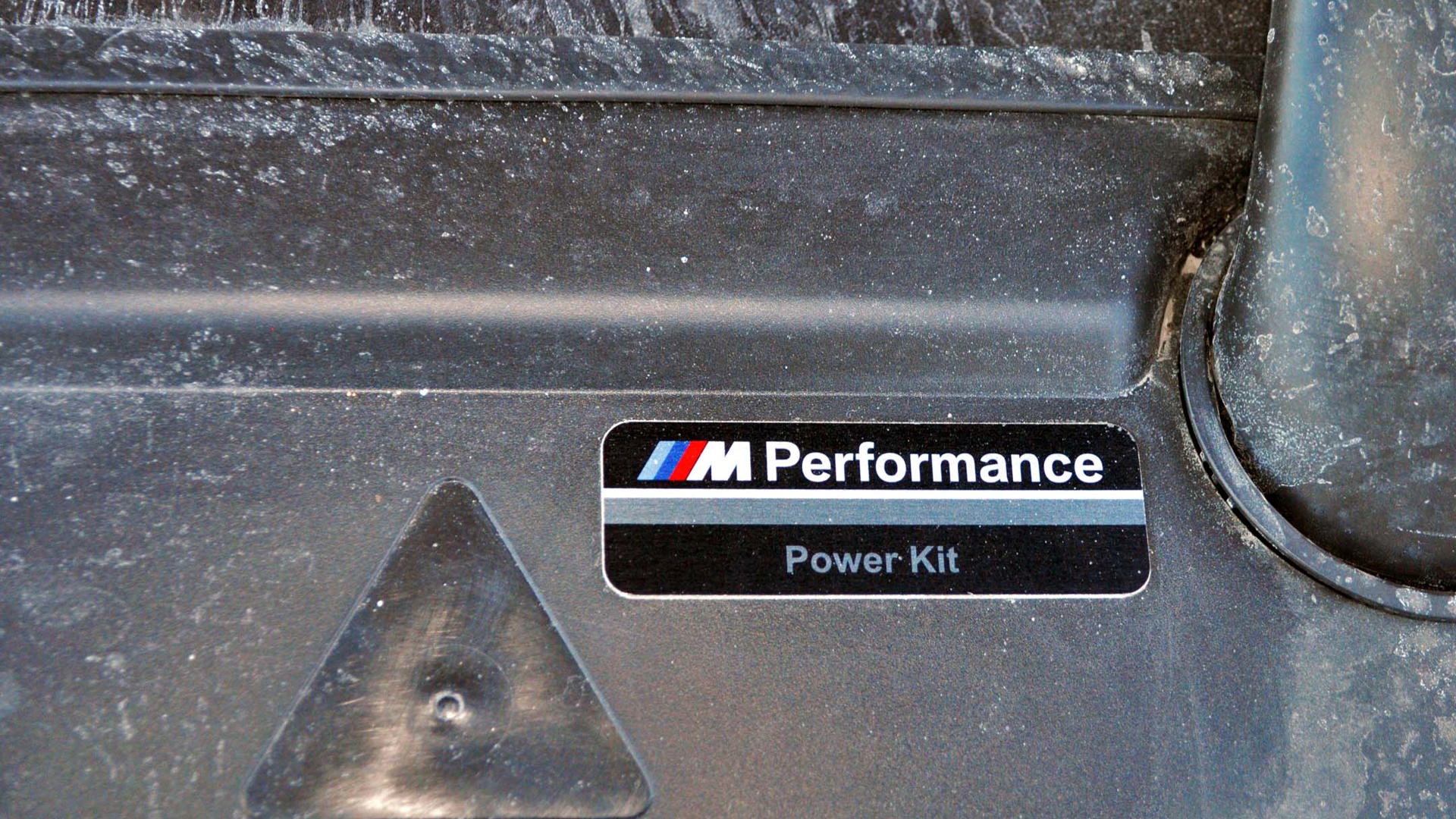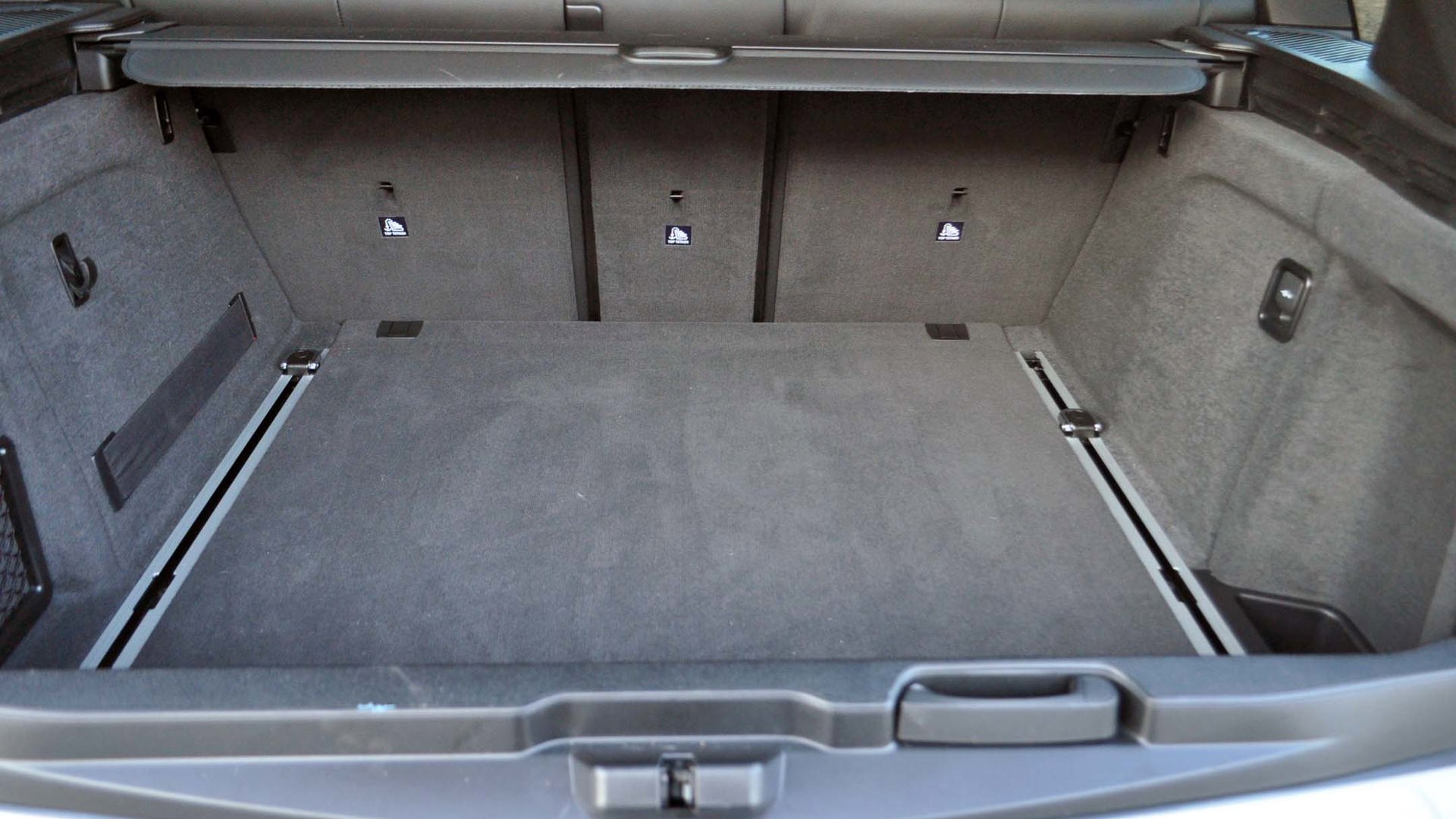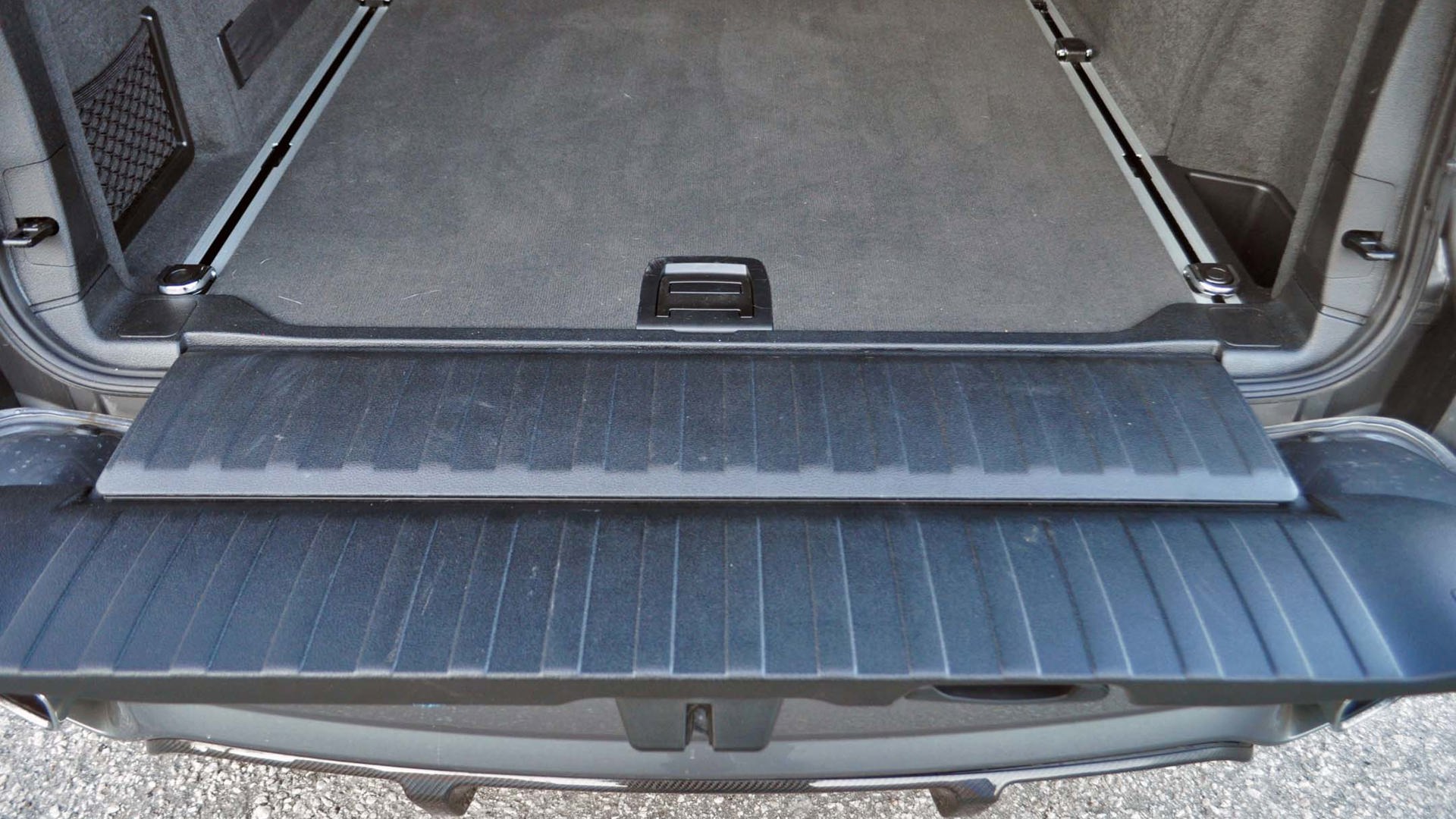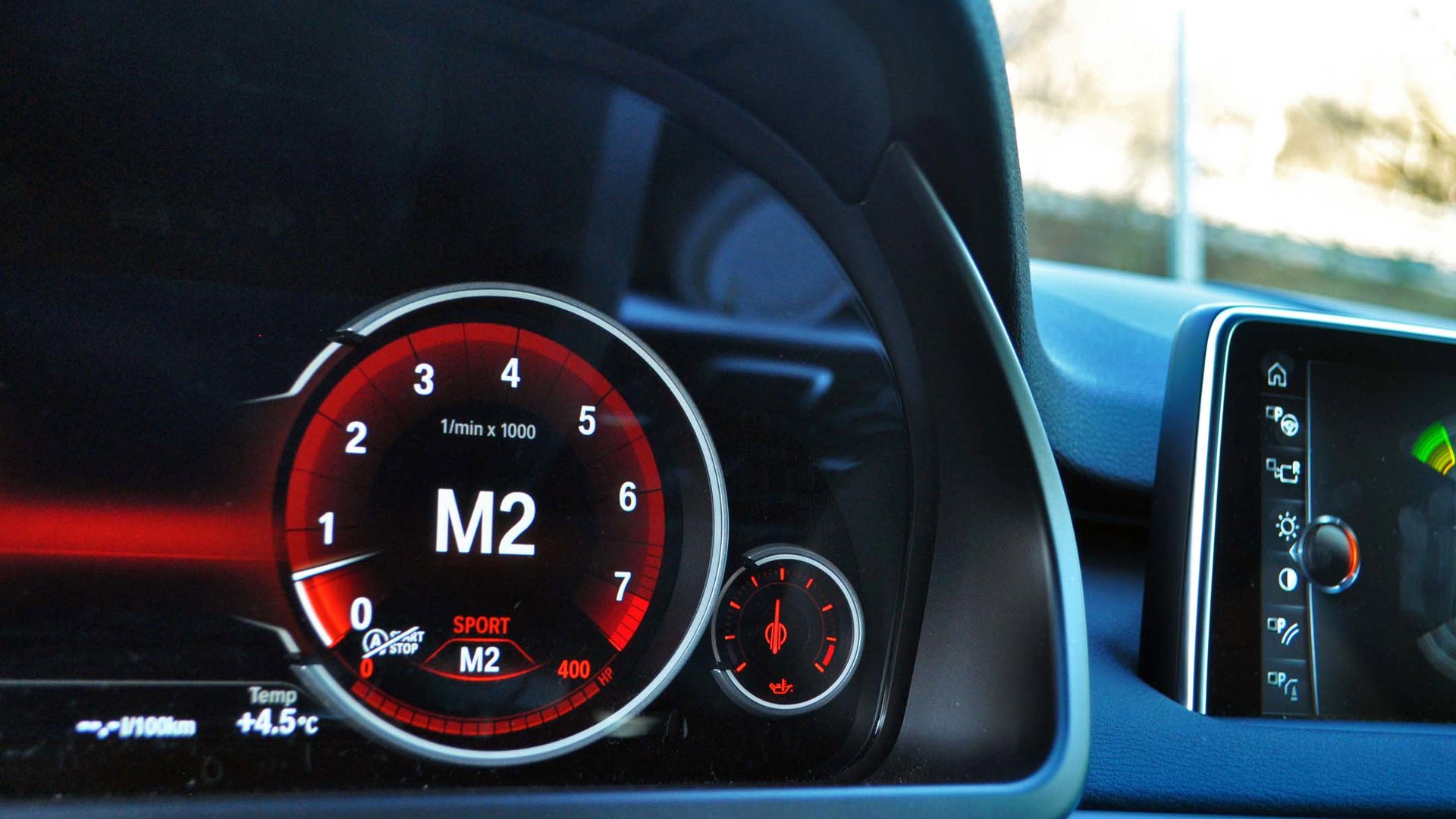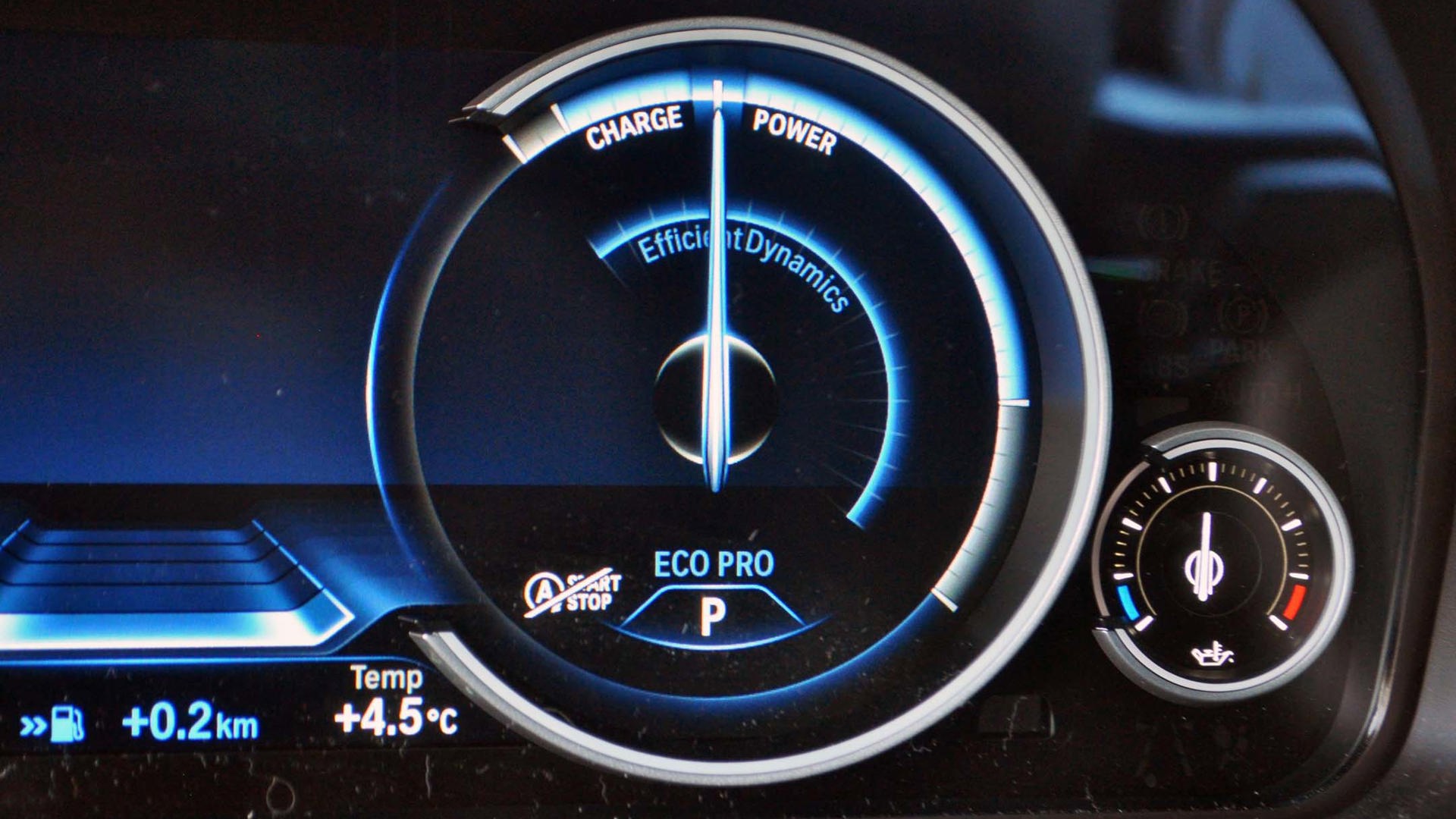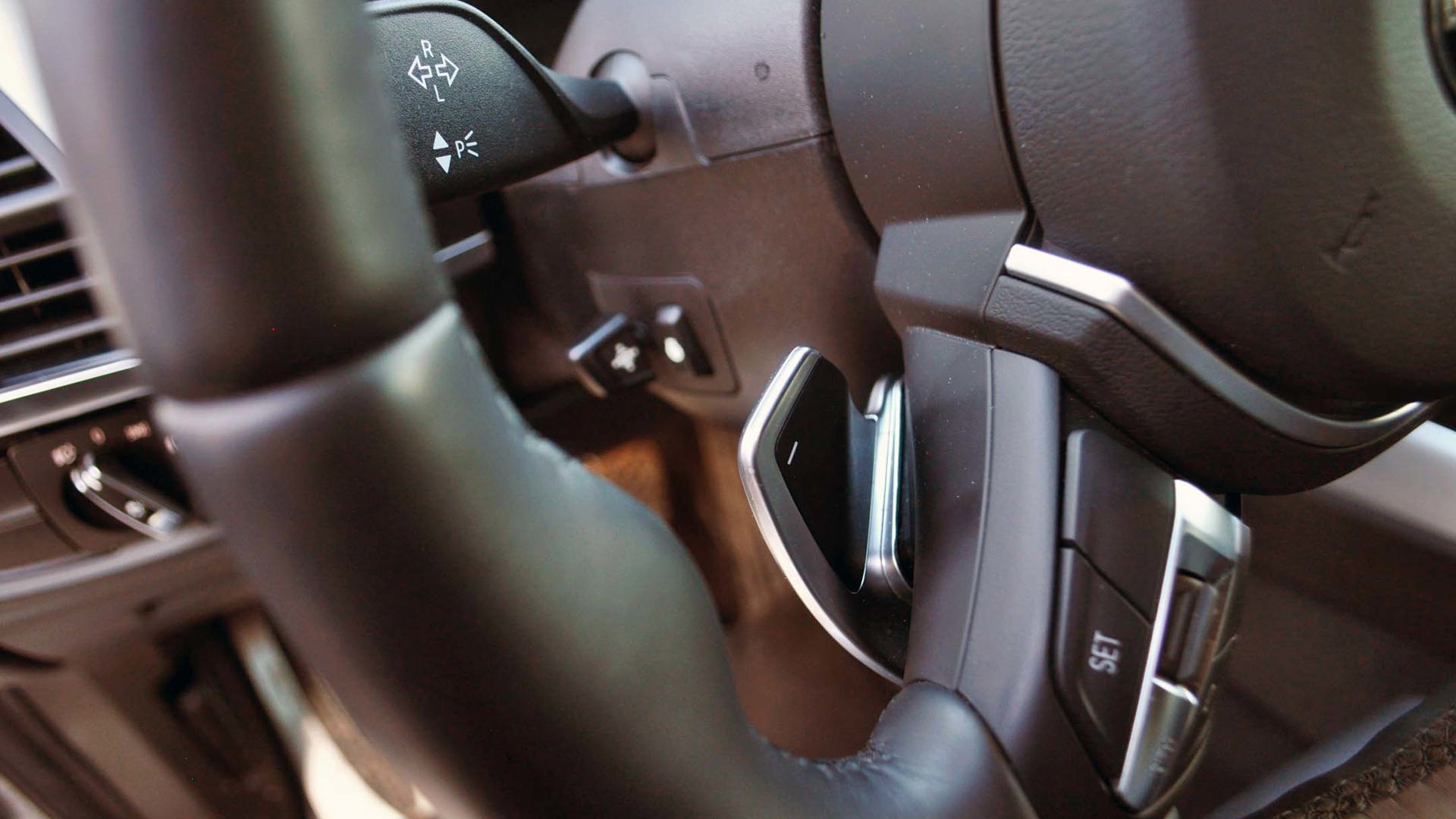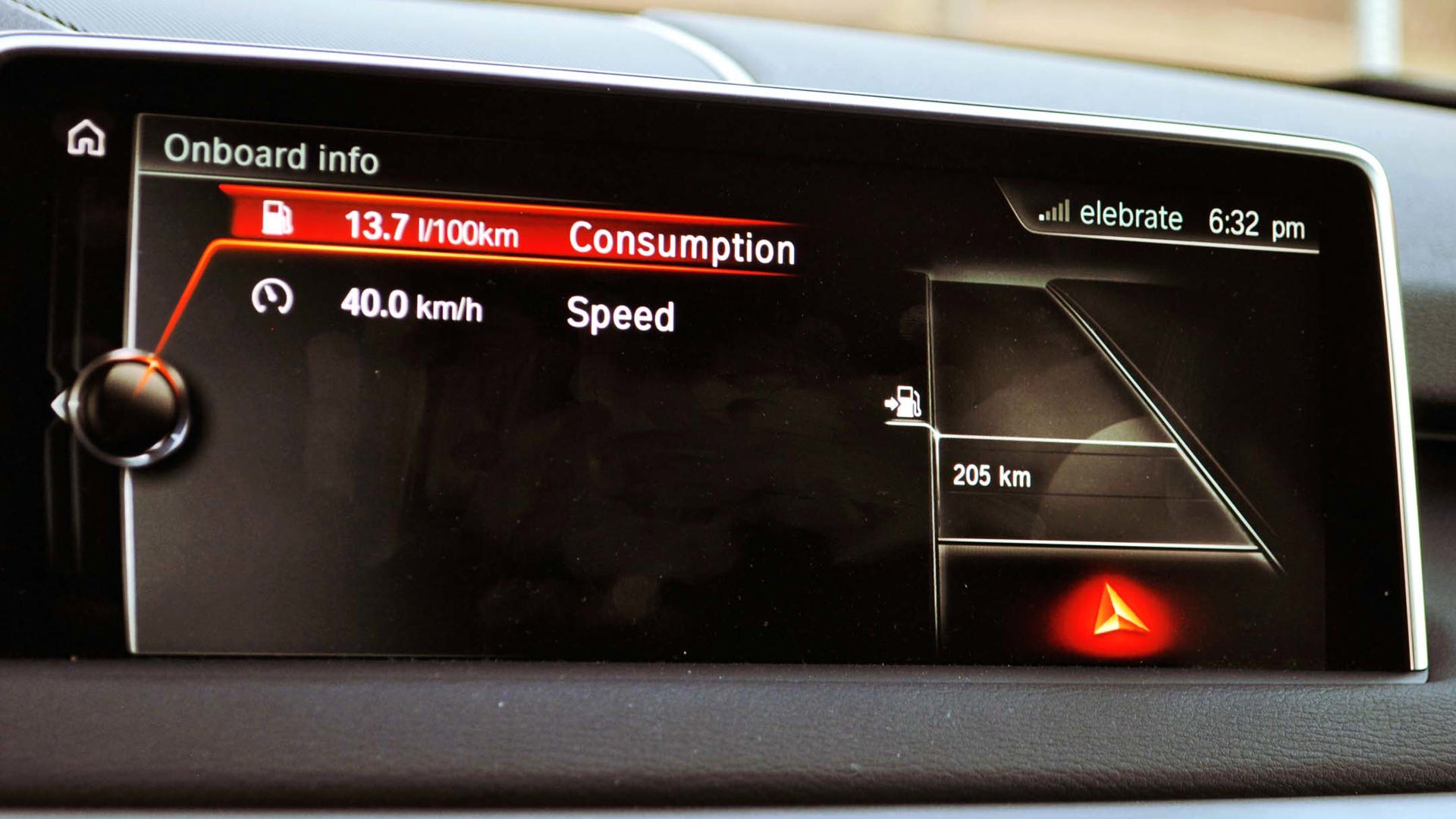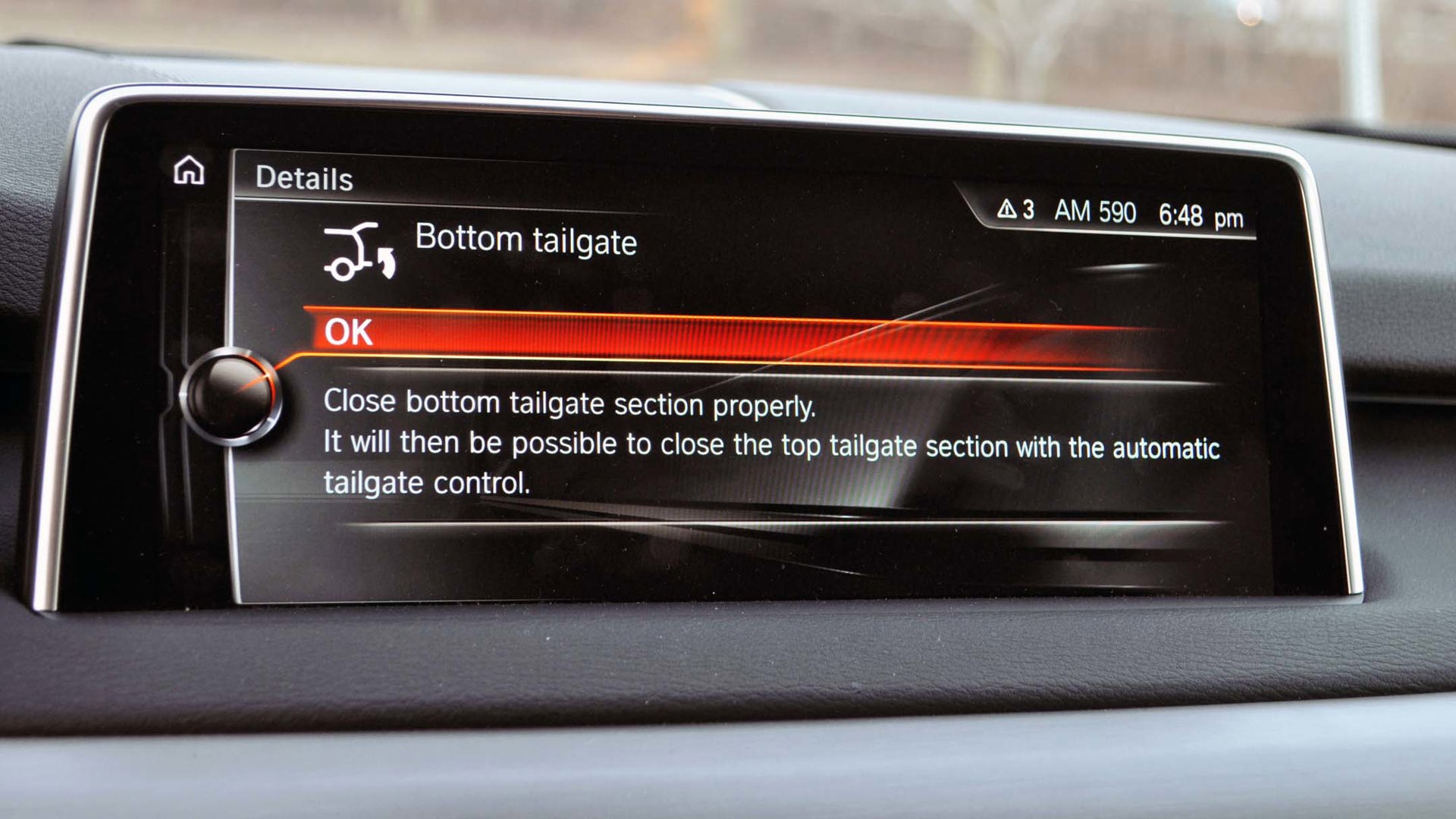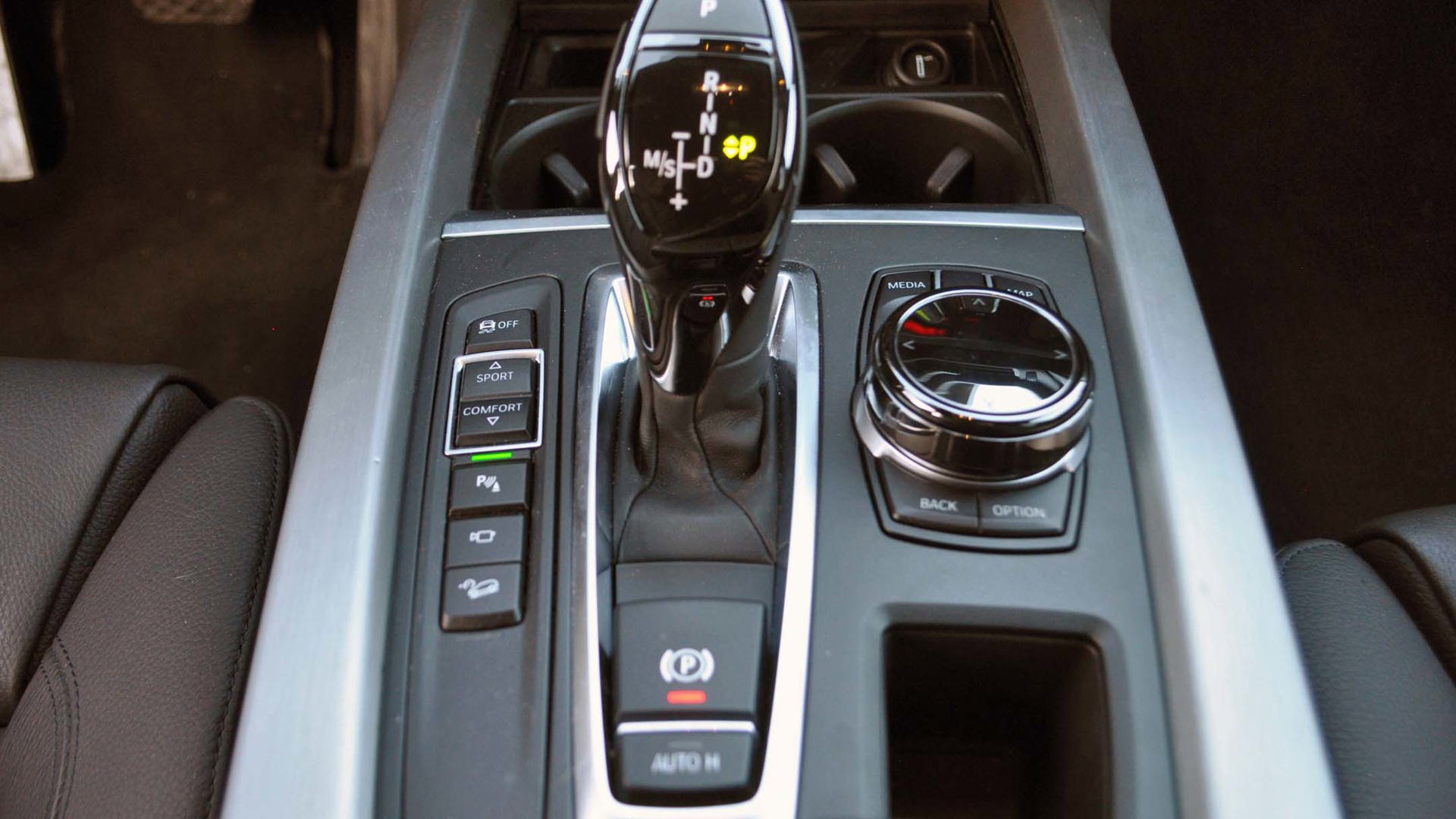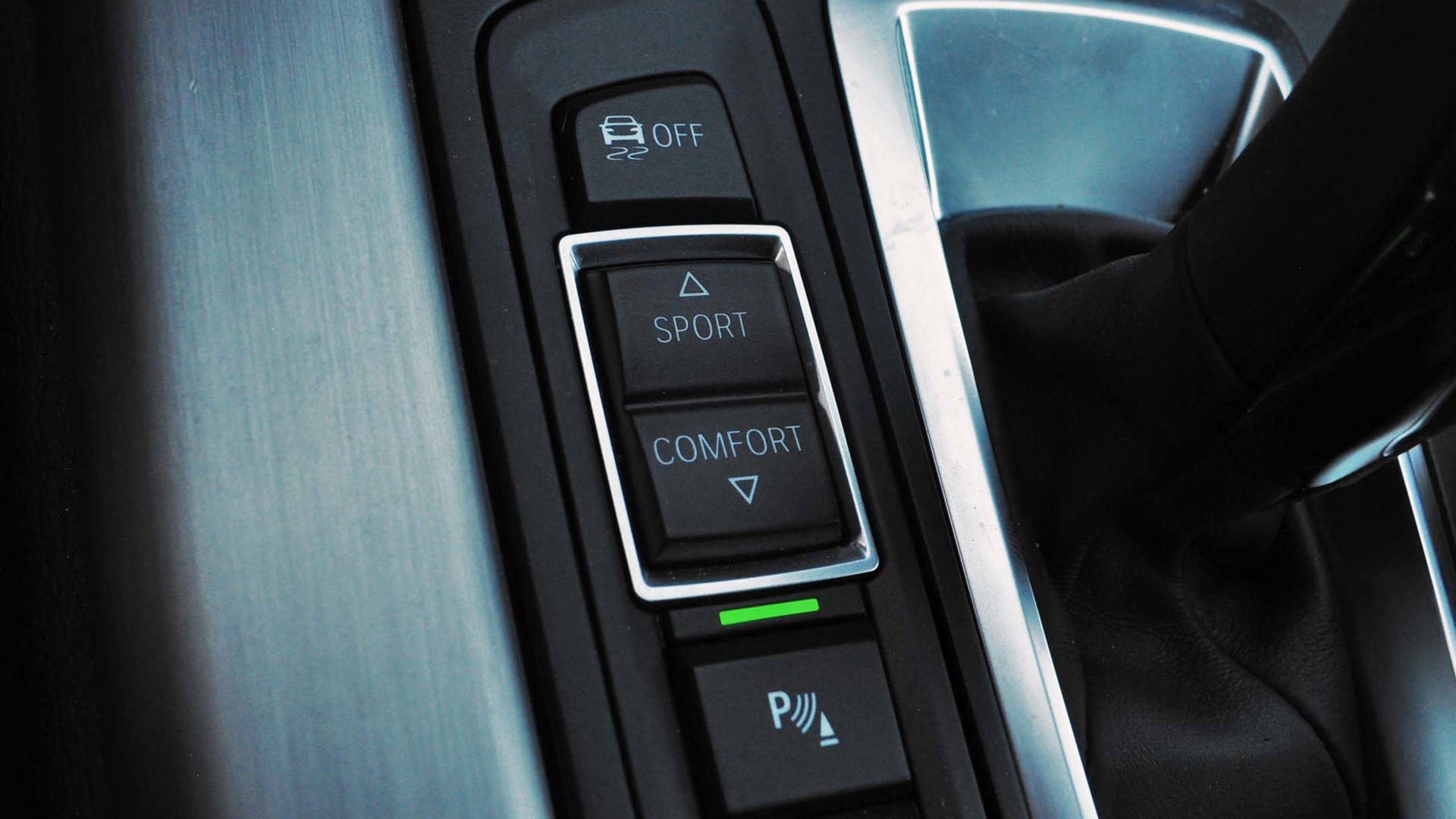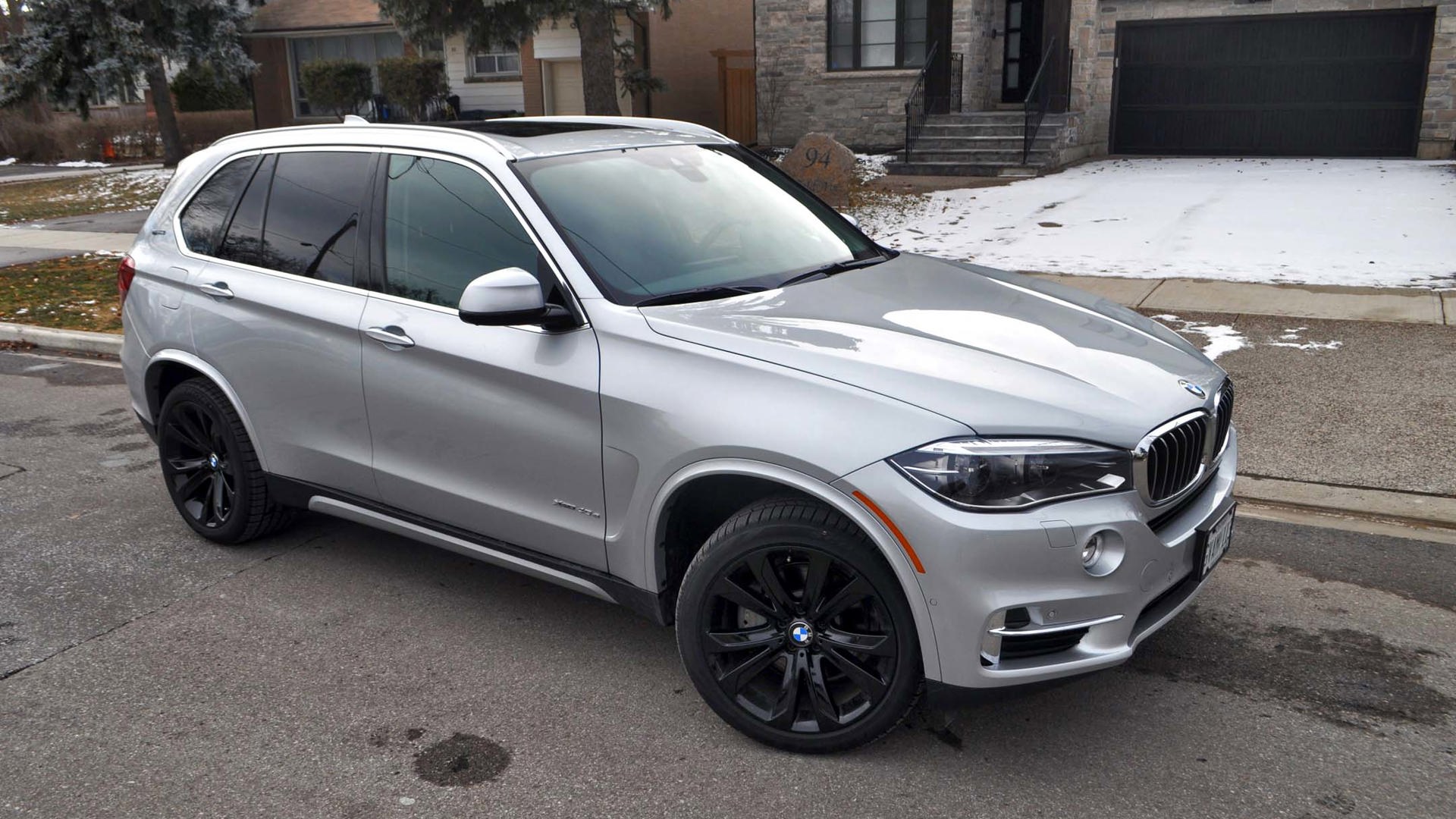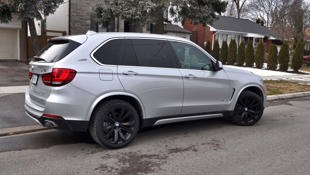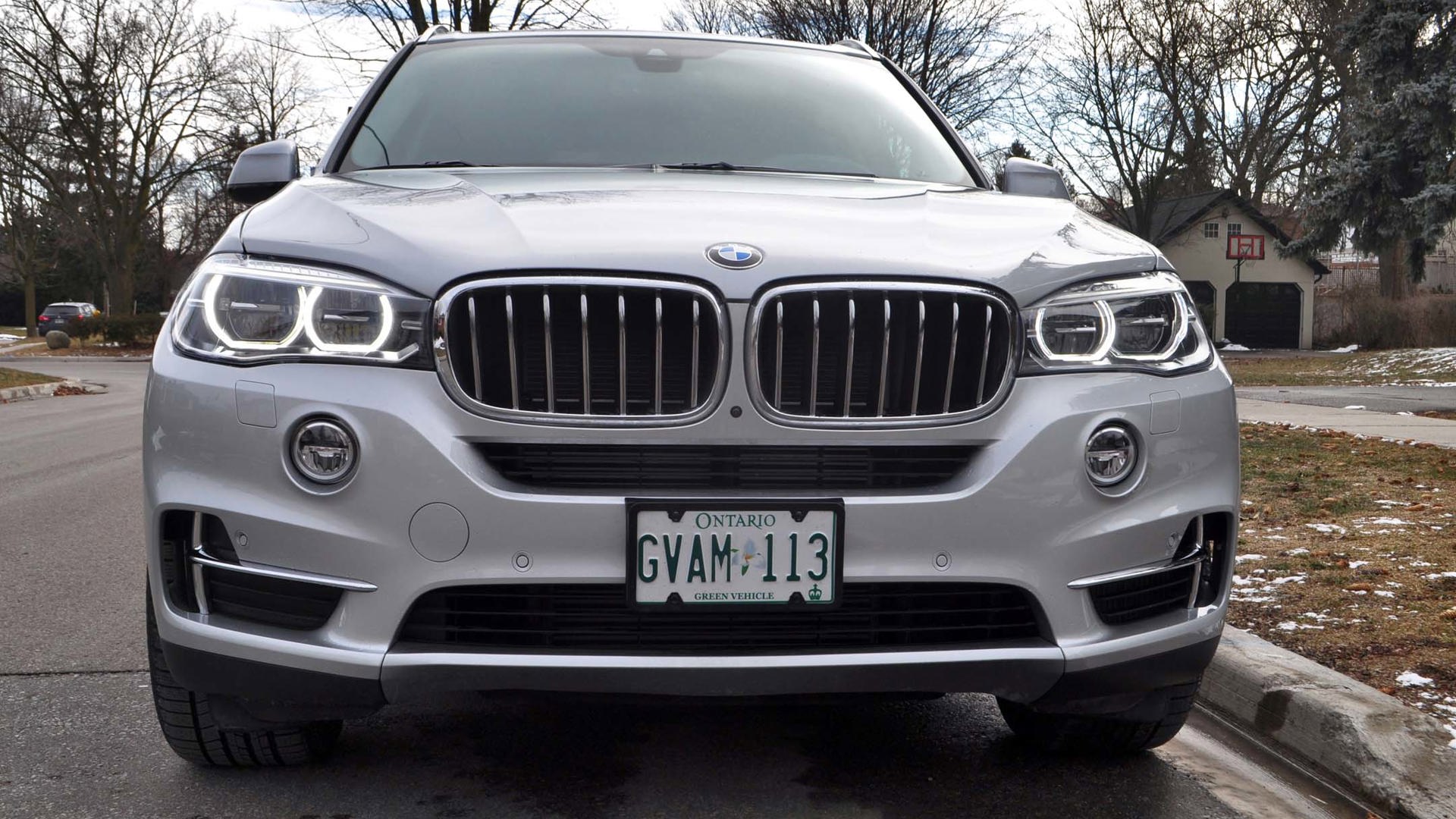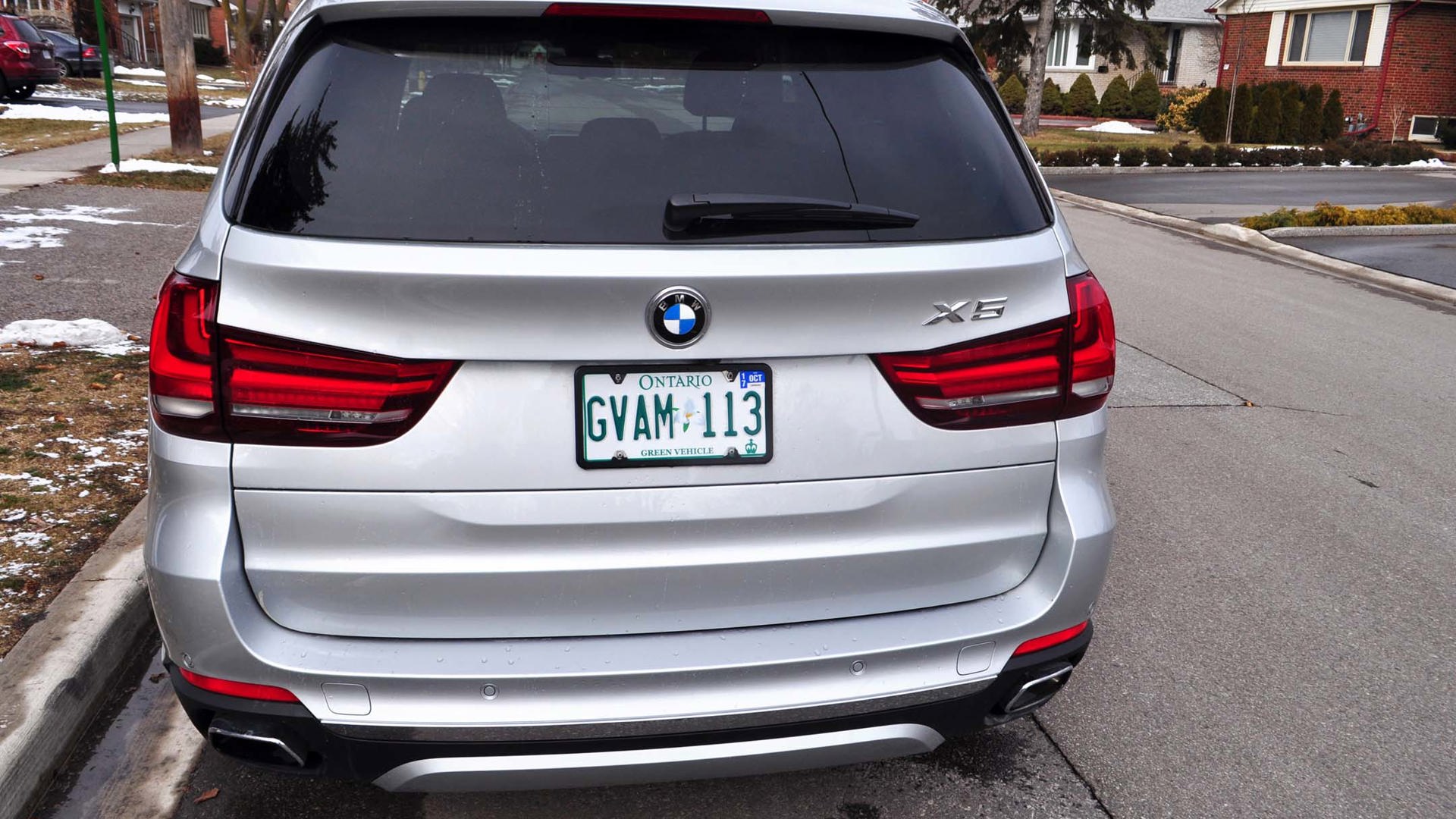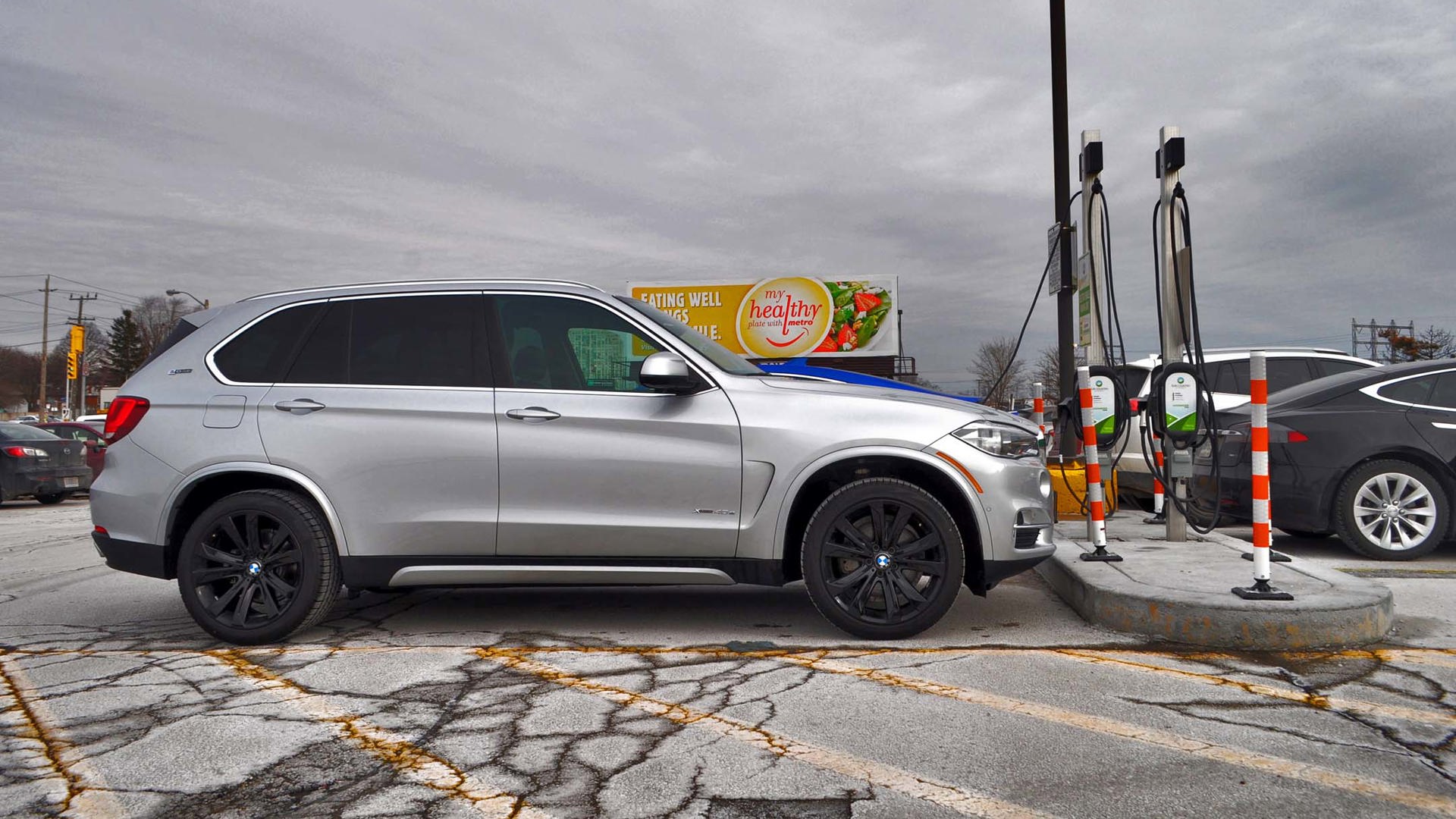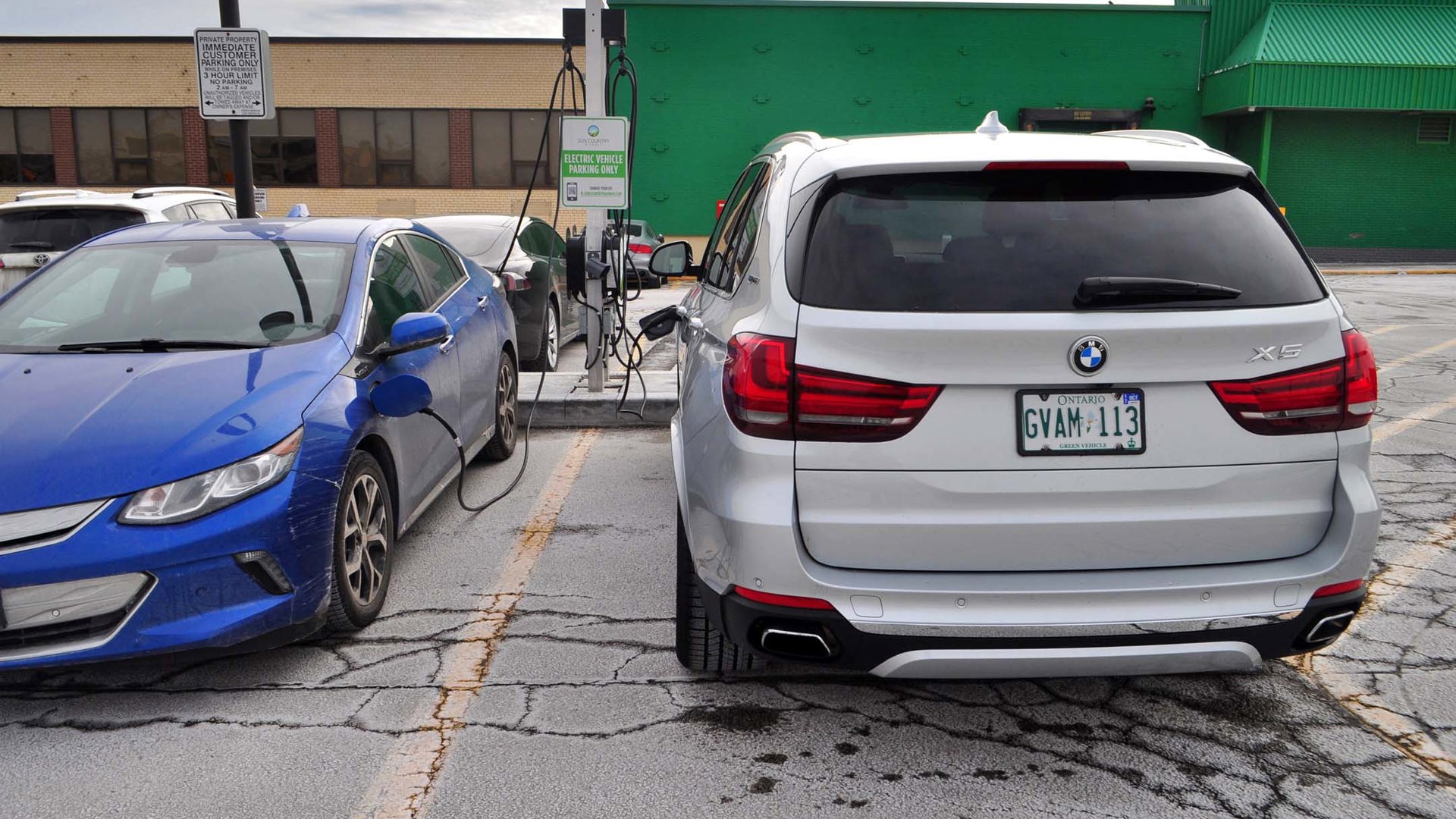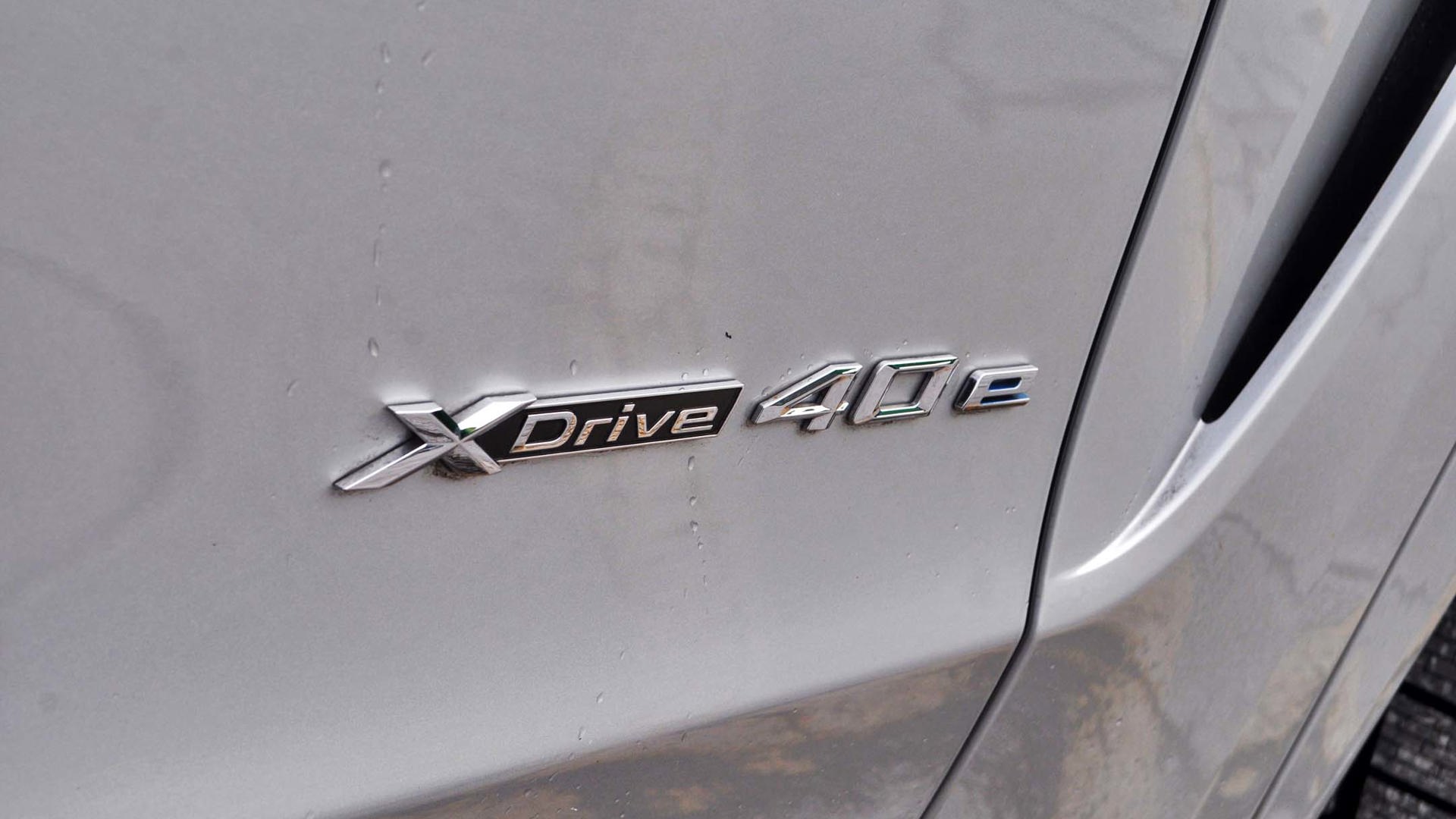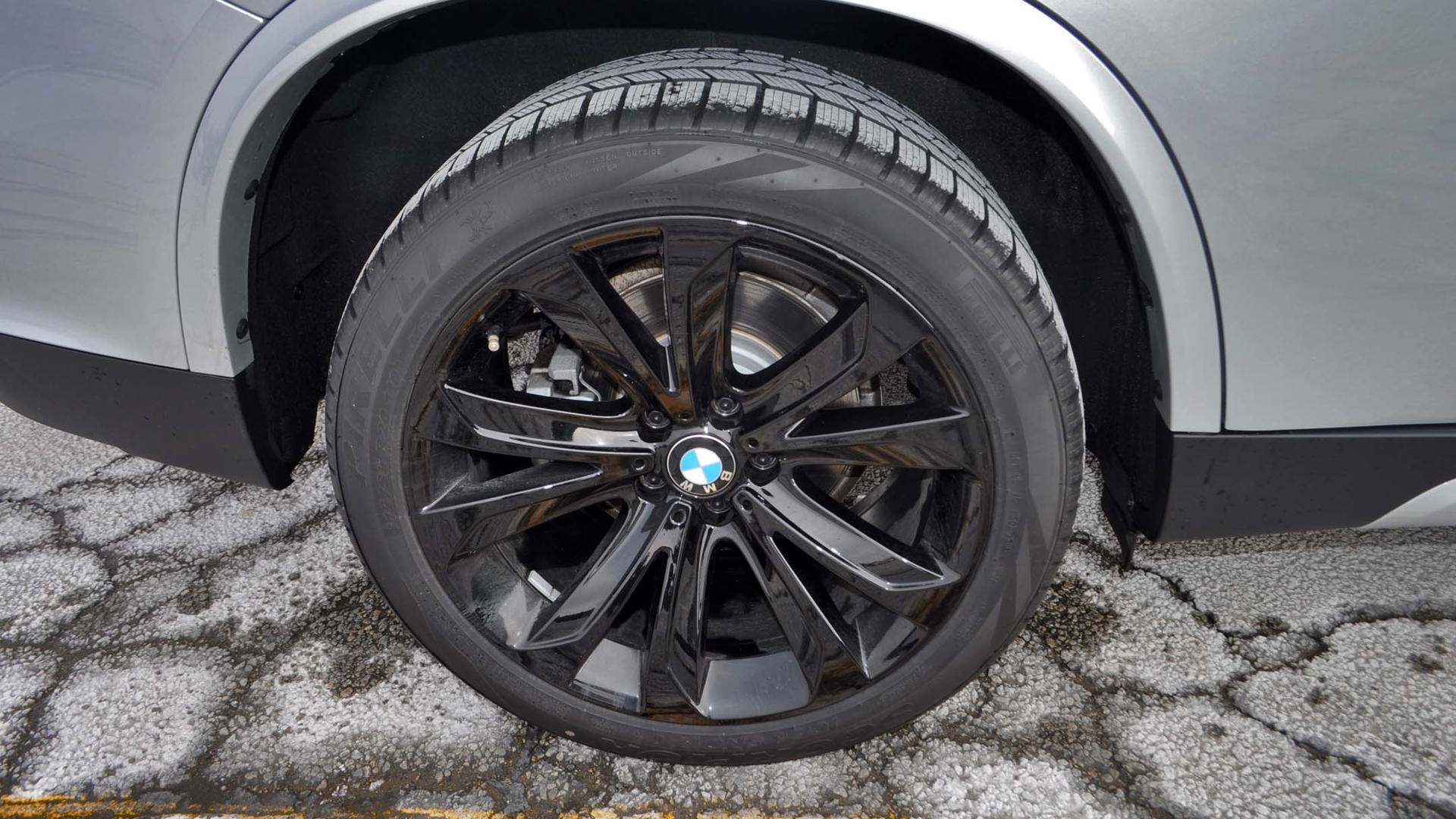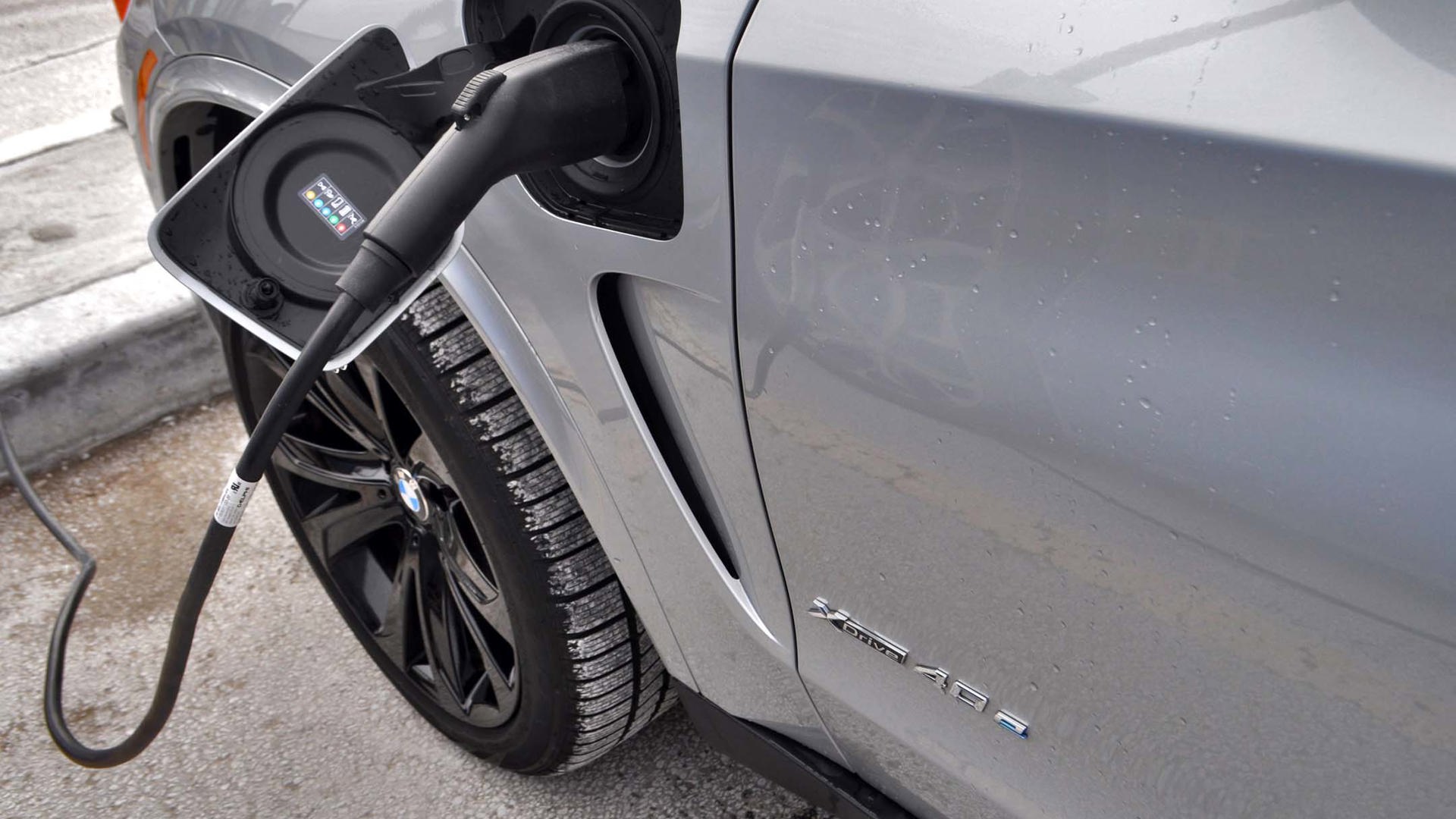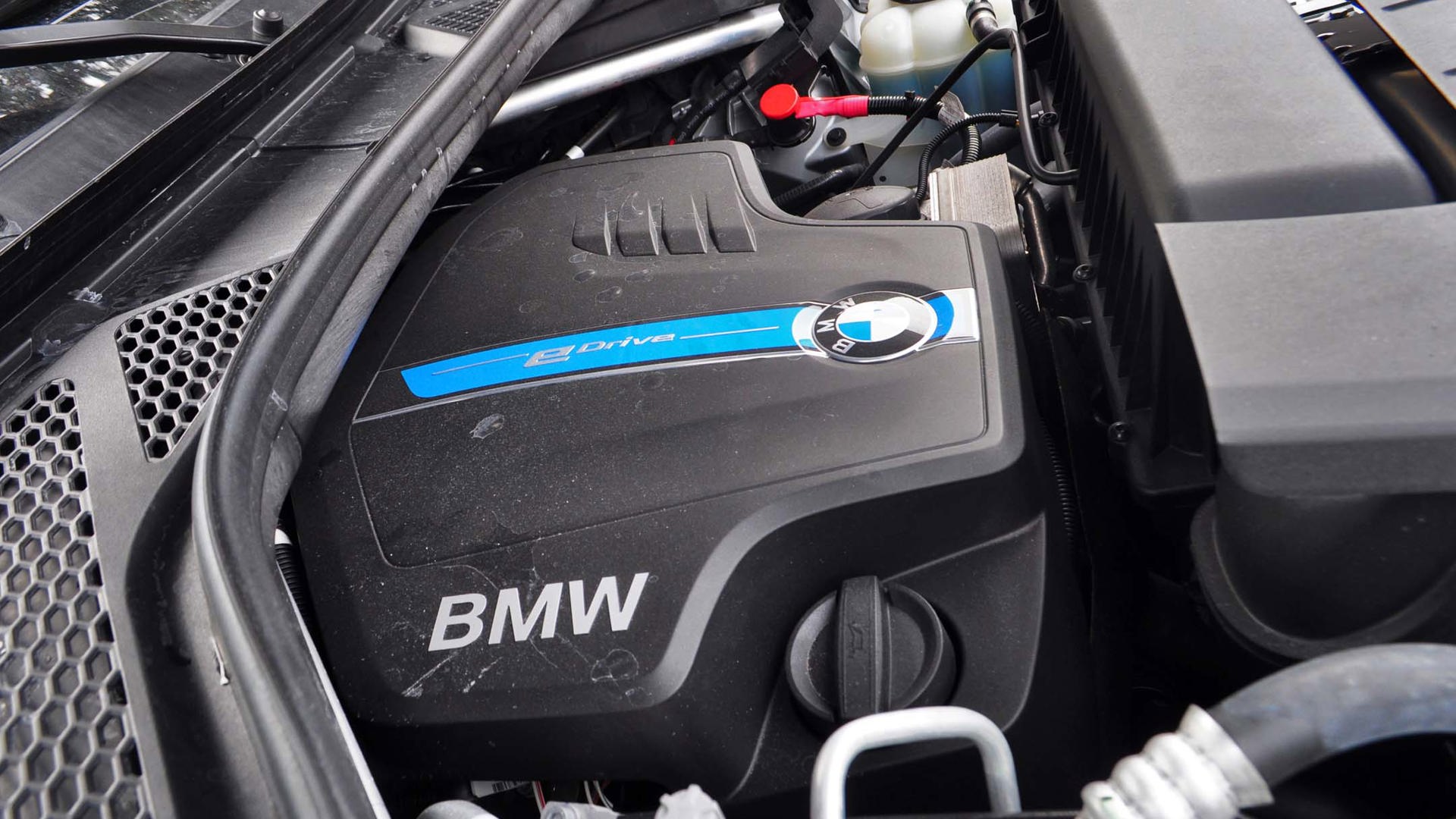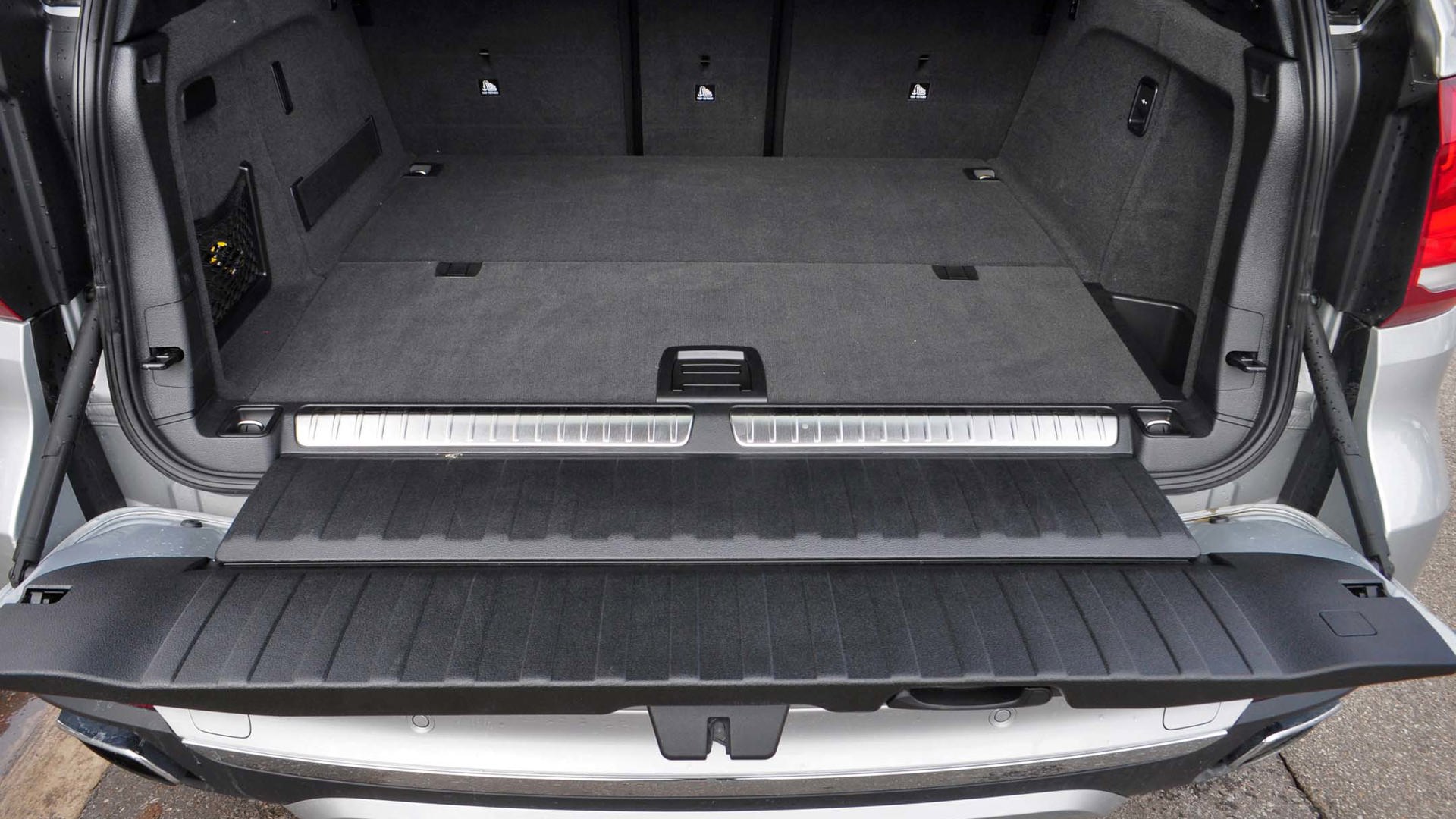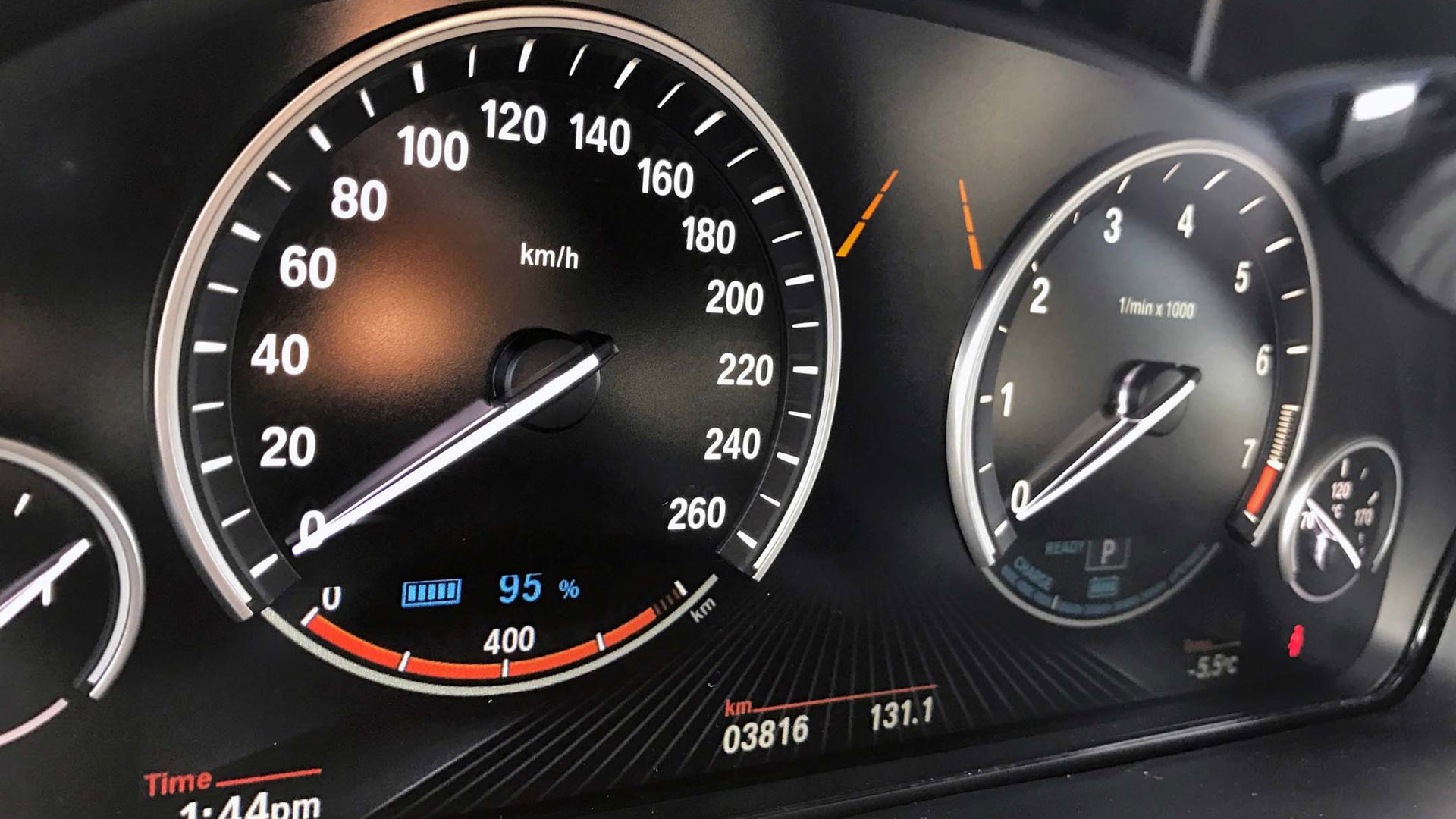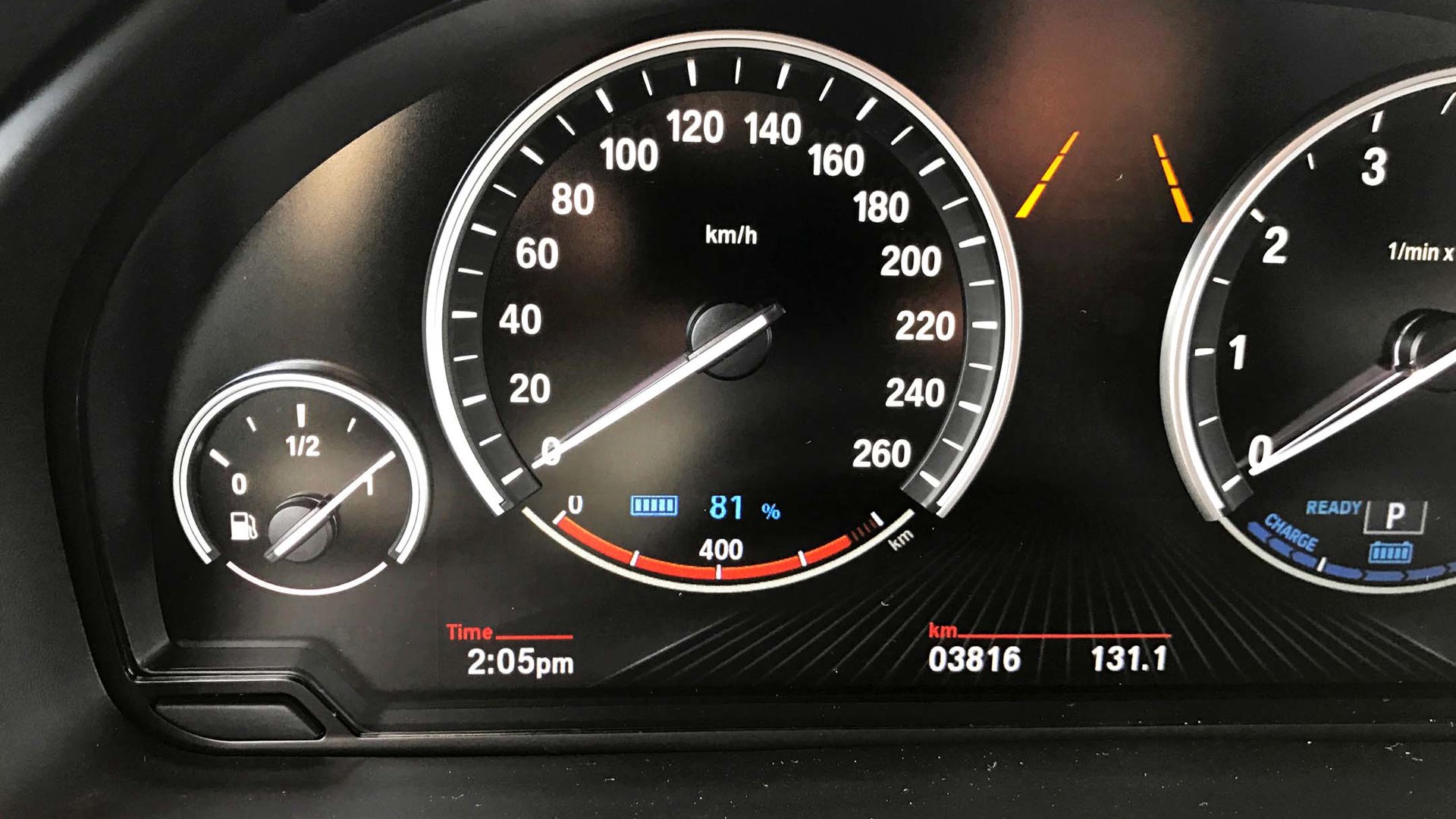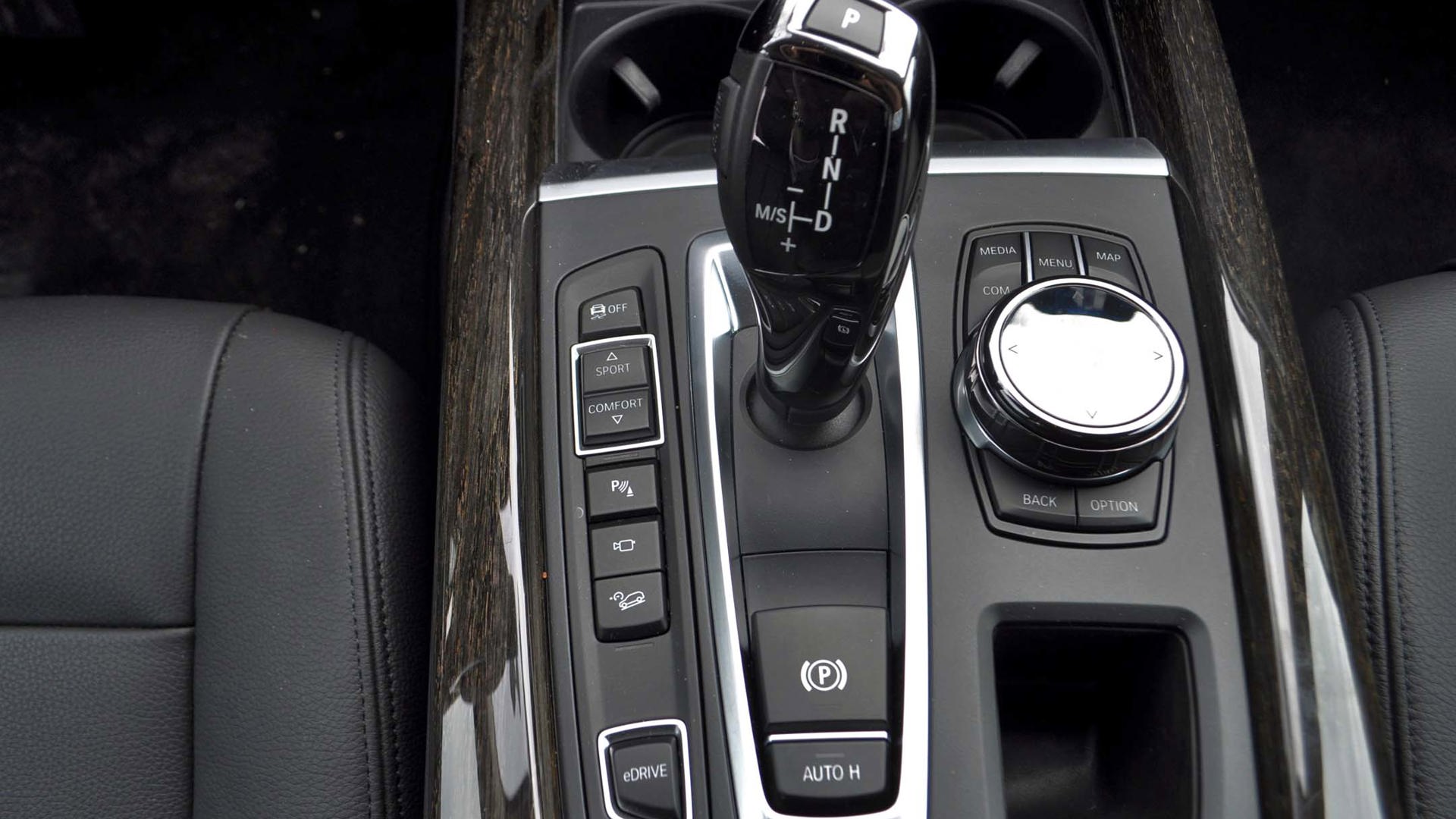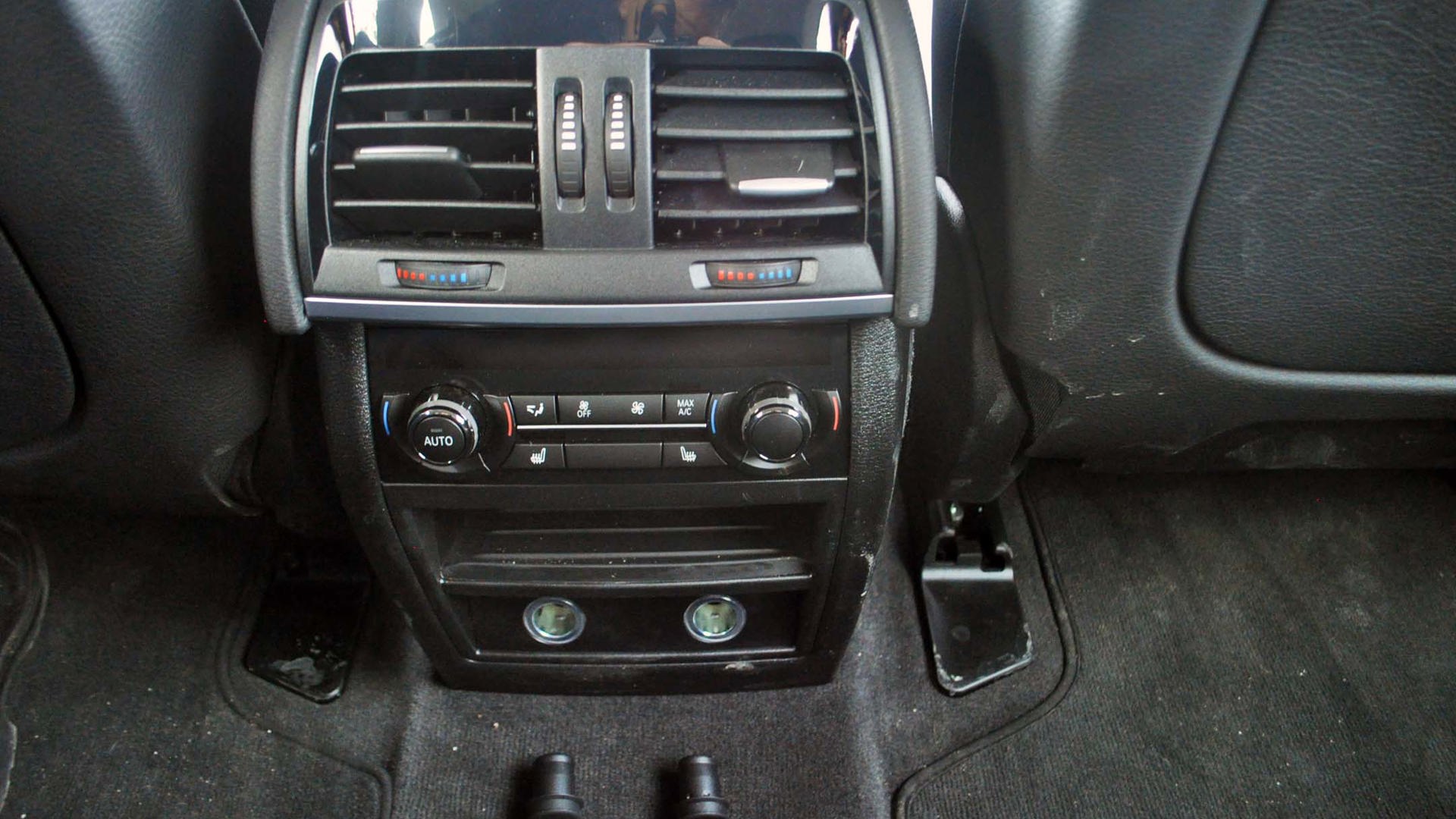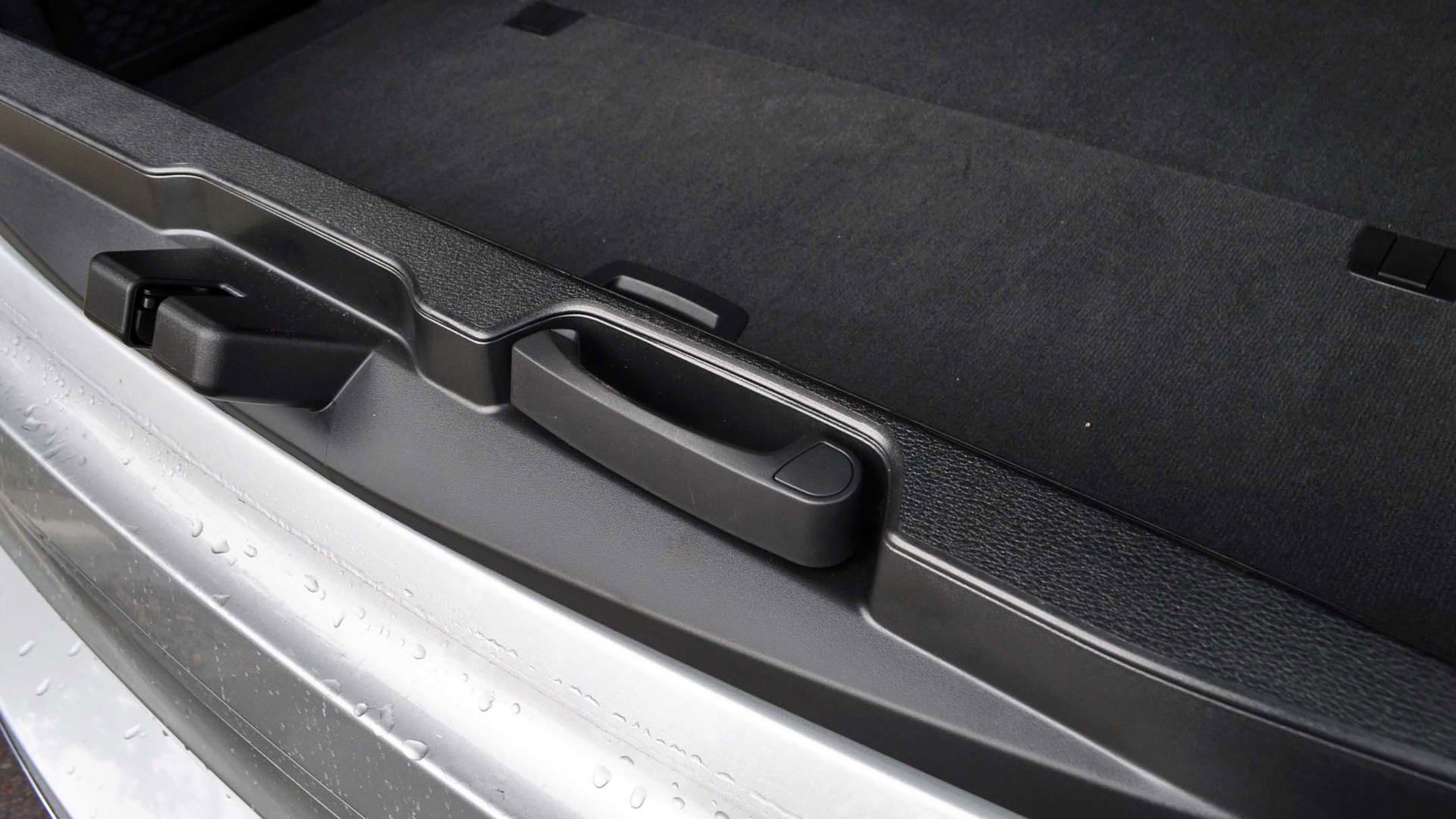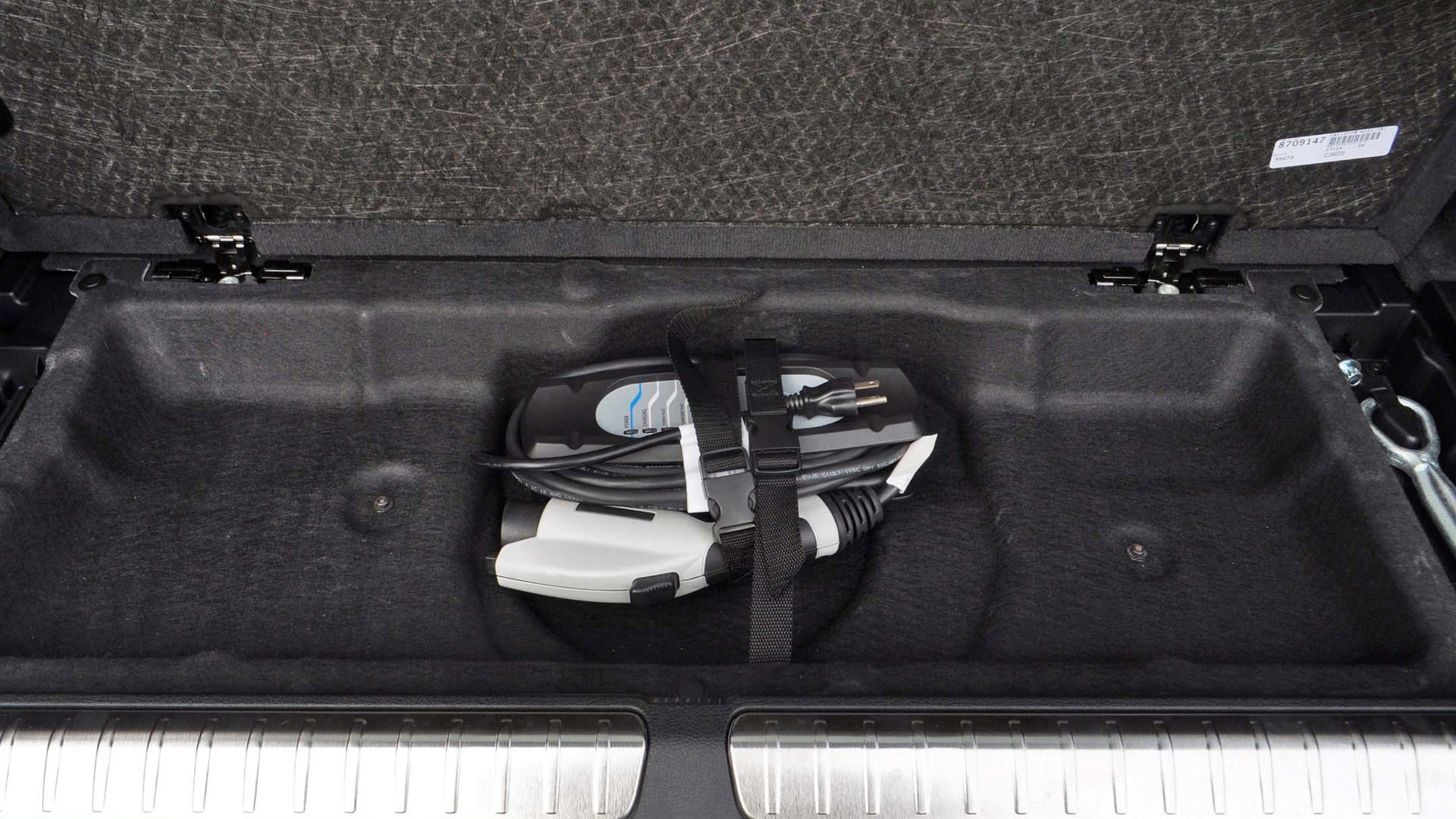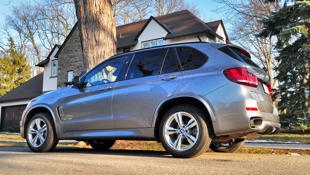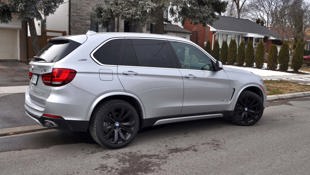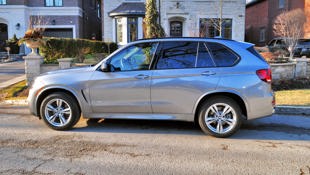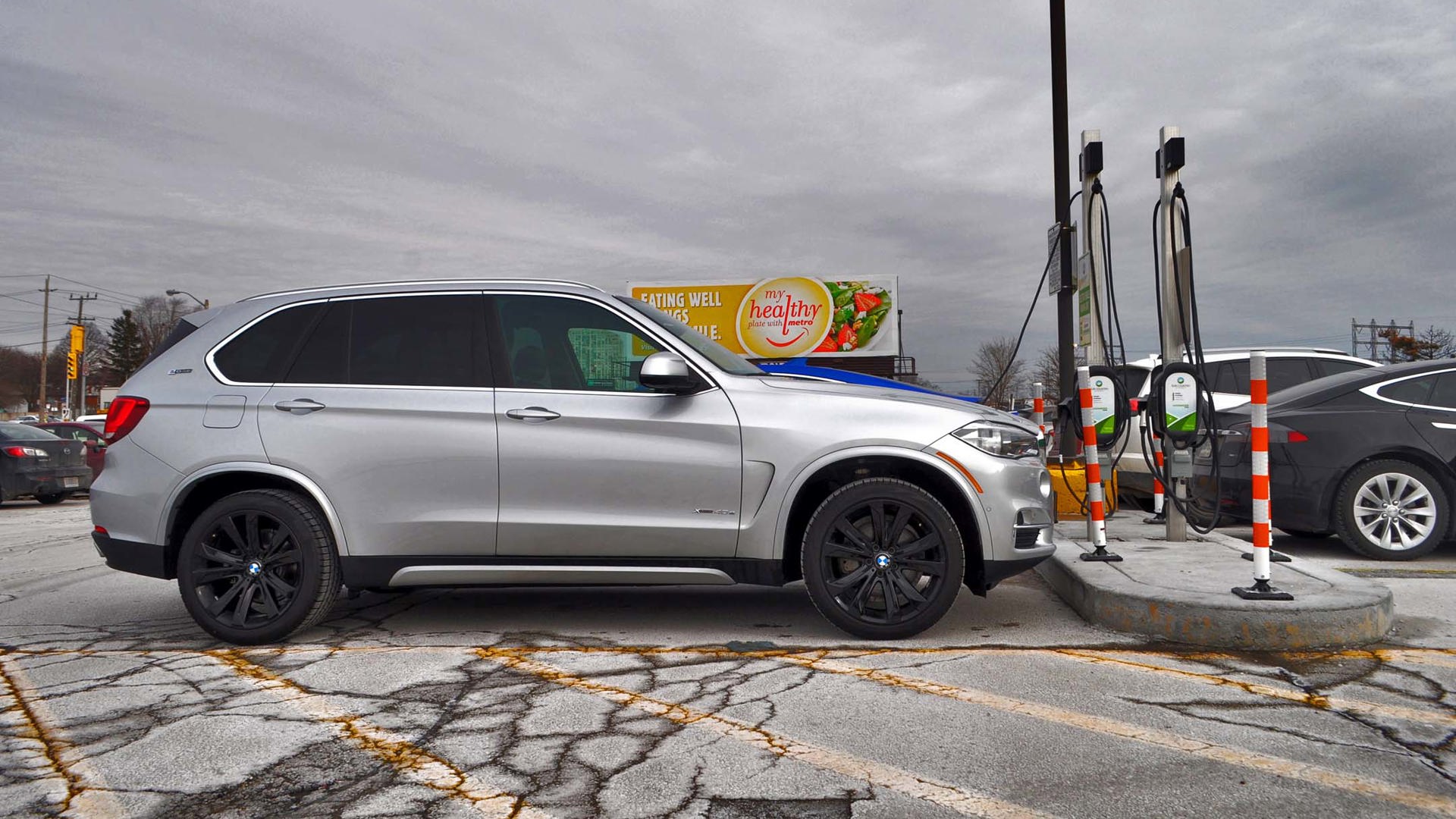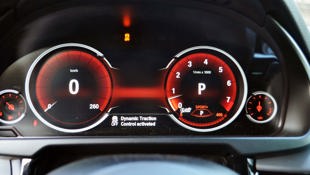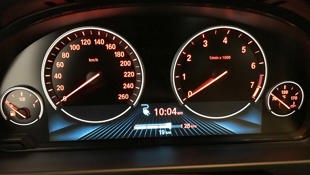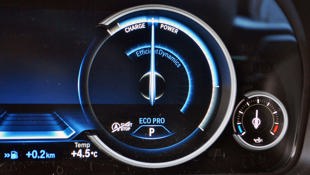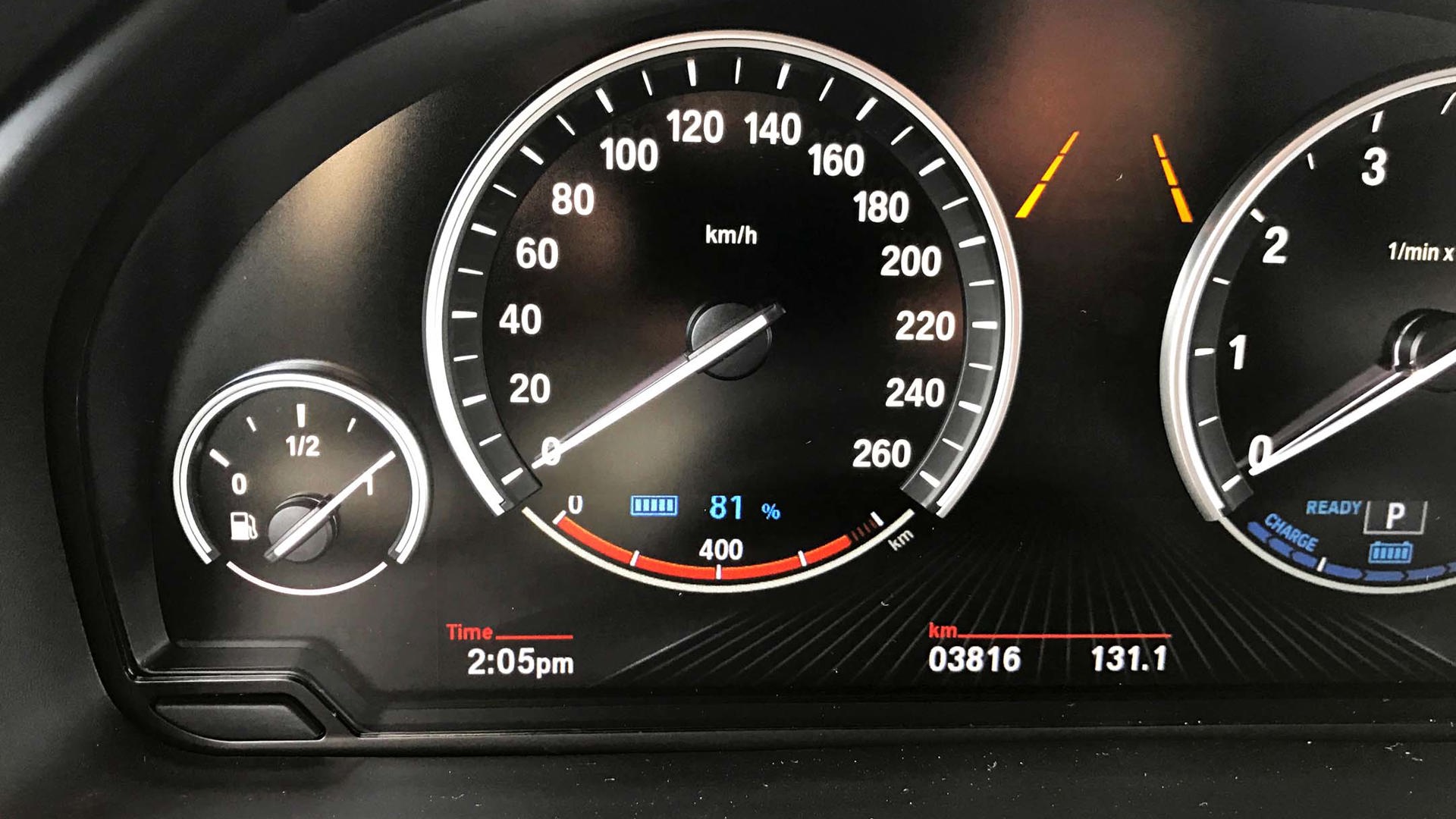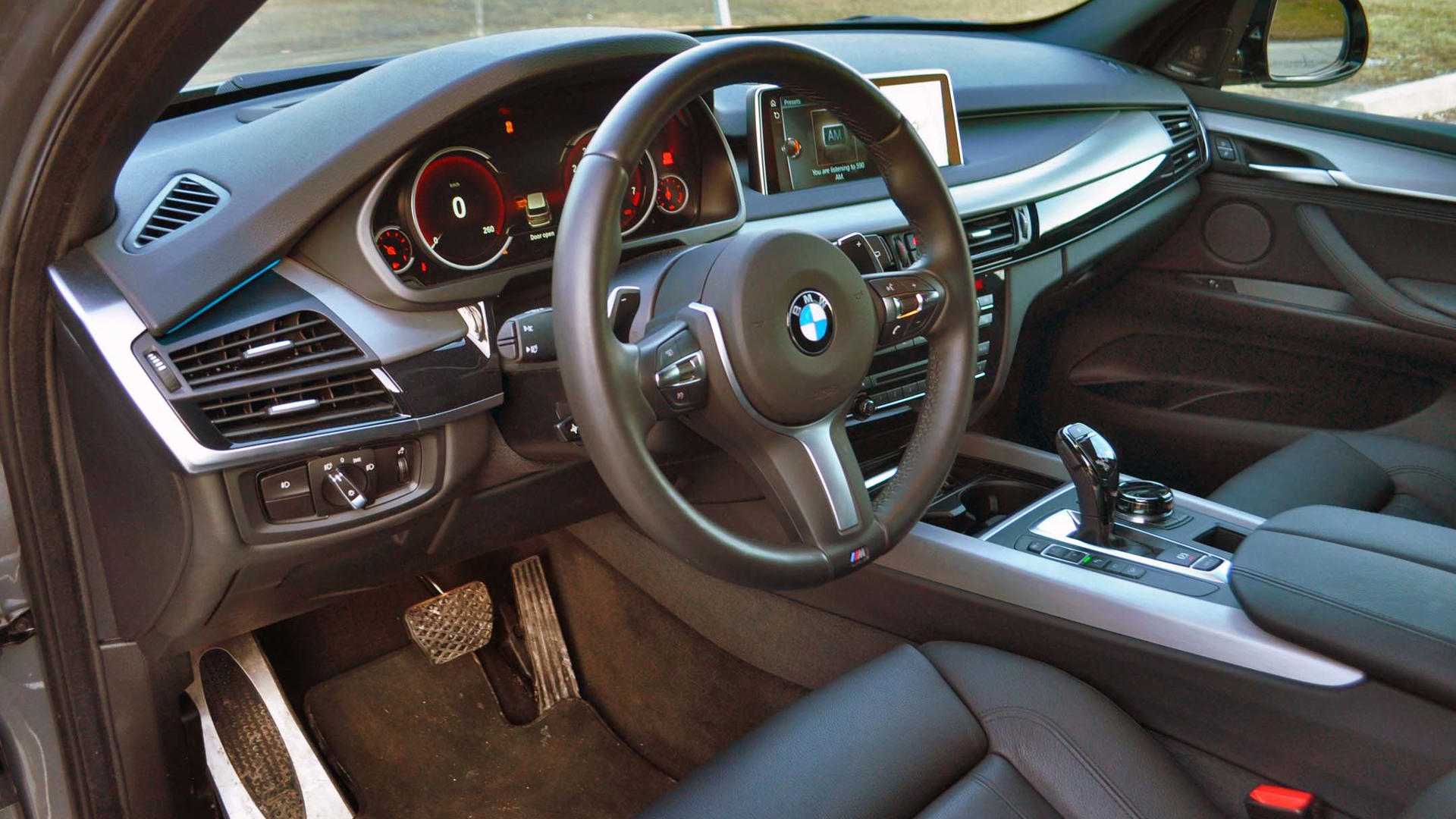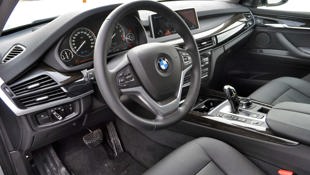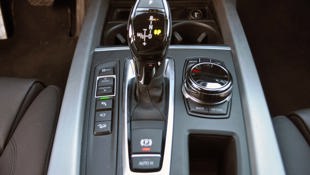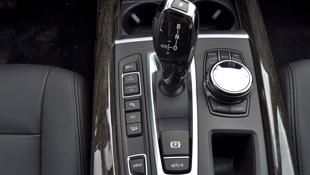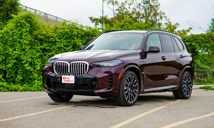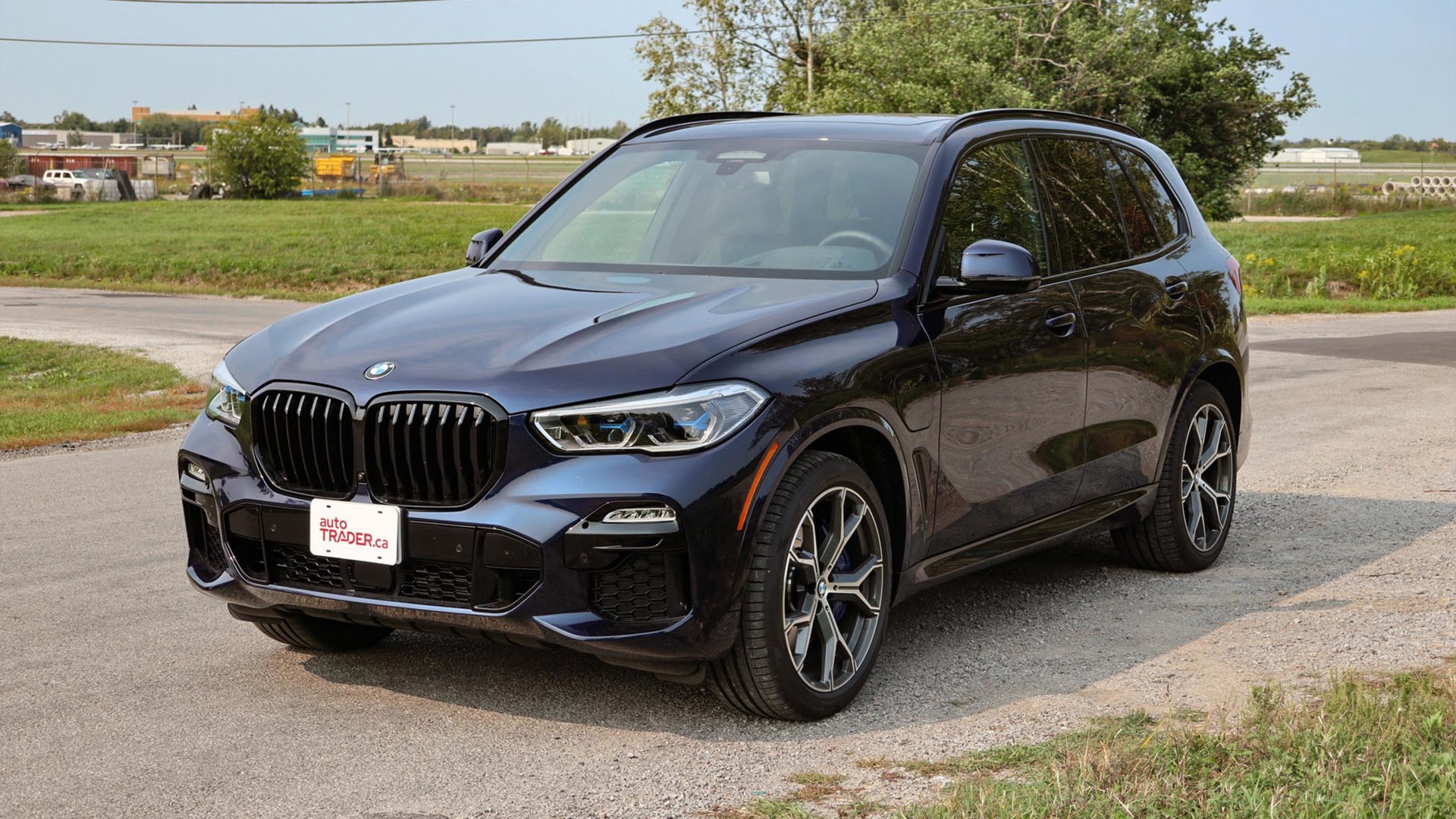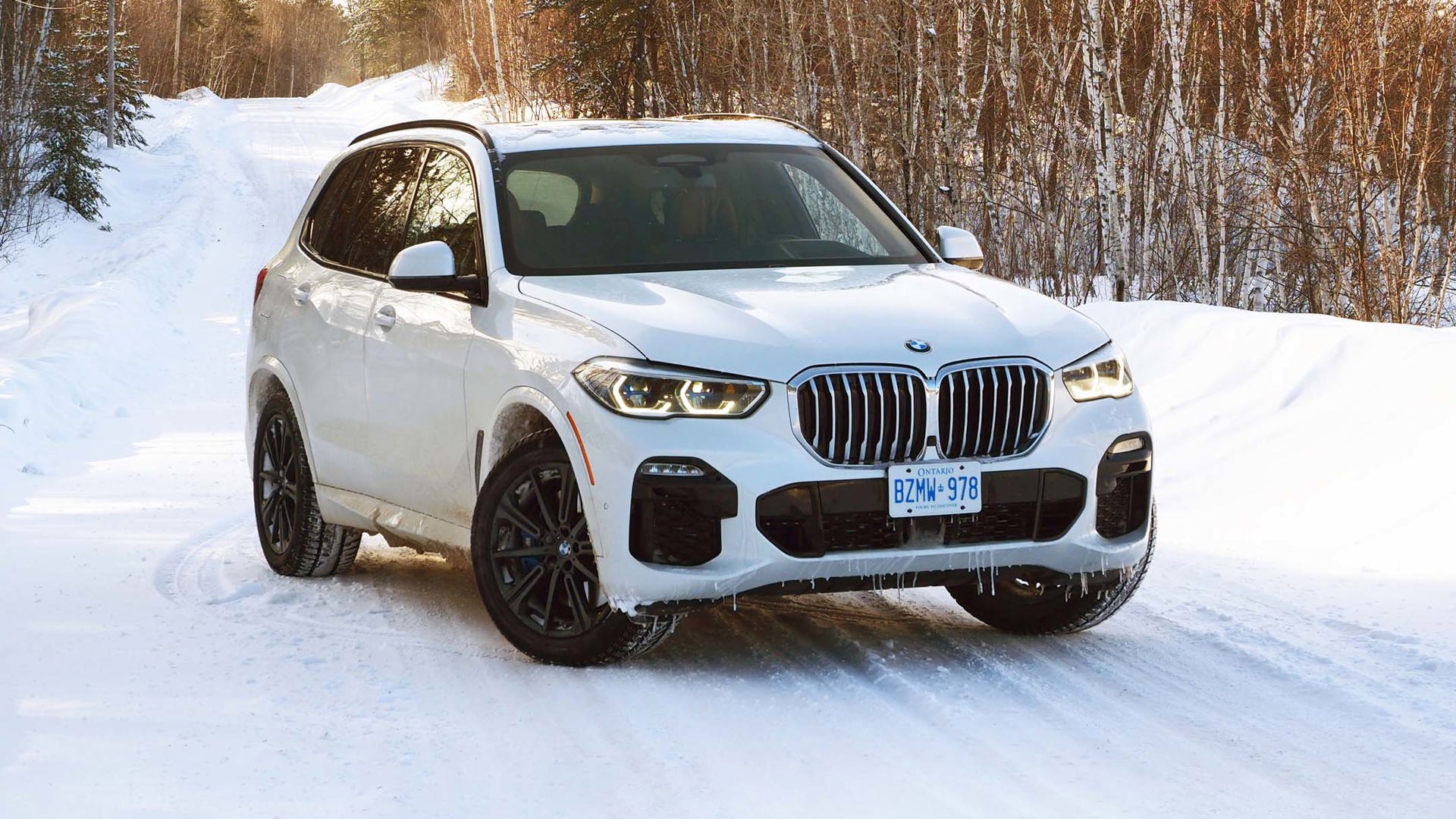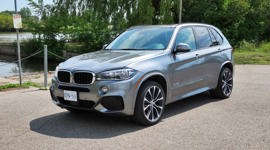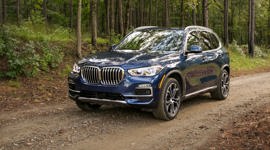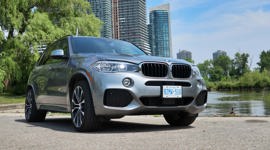Comparison Data
|
2017 BMW X5 xDrive40e
|
2017 BMW X5 xDrive35i
|
|---|---|
|
Engine Displacement
2.0L
|
3.0L
|
|
Engine Cylinders
4
|
6
|
|
Peak Horsepower
308 hp @ 5,000–6,500 rpm
|
320 hp @ 5,800–6,400 rpm
|
|
Peak Torque
332 lb-ft @ 1,250–4,800 rpm
|
332 lb-ft @ 1,200–5,000 rpm
|
|
Fuel Economy
10.2/9.5/9.9 L/100km cty/hwy/cmb
|
13.0/9.8/11.5 L/100km cty/hwy/cmb
|
|
Cargo Space
500 L /1,720 L seats down
|
650 L/1,870 L seats down
|
|
Base Price
$74,700
|
$67,000
|
|
A/C Tax
$100
|
$100
|
|
Destination Fee
$2,145
|
$2,145
|
|
Price as Tested
$86,495
|
$95,955
|
|
Optional Equipment
$9,550 – Premium Package Enhanced (Comfort Access, Soft Close Doors, Manual Side Sunshades, Storage Compartment Package, Heated Rear Seats, Auto Zone Climate Control, Lights Package, Active Blind Spot Detection, Active Protection, Driving Assistant, Surround View, Park Assistant (Incl. PDC Front/Rear), Head-Up Display, SiriusXM Satellite Radio, Harman/Kardon Sound System, Speed Limit Info) $6,300; Smartphone Connectivity Package (Apple CarPlay, Wireless Charging with Extended Bluetooth and USB, WiFi Hotspot) $750; LED Lighting Package (Active LED Headlights, LED Fog Lights, High-Beam Assistant) $2,500
|
$26,710 – Premium Package Enhanced (Universal Remote Control, Comfort Access, Soft Close Doors, Manual Side Sunshades, Storage Compartment Package, Heated Rear Seats, Auto 4-Zone Climate Control, Lights Package, Active Blind Spot Detection, Active Protection, Driving Assistant, Surround View, Park Assistant (Incl. PDC Front/Rear), Head-Up Display, SiriusXM Satellite Radio, Harman/Kardon Sound System, Speed Limit Info) $6,900; Smartphone Connectivity Package (Apple CarPlay, Wireless Charging with Extended Bluetooth and USB, WiFi Hotspot) $750; LED Lighting Package (Active LED Headlights, LED Fog Lights, High-Beam Assistant) $2,500; M Performance Package II (Carbon Fibre Front Splitter, High-Gloss Black Kidney Grills, Carbon Fibre Side Mirrors, Carbon Fibre Rear Diffuser, M Power Kit, M Performance Exhaust (+20HP and +32lb-ft of torque and increased throttle response. 0-100Km/h improves by 0.5s.) $5,900; M Sport Line (20”M Double-Spoke Lt Alloy, style 469M, Mixed Tires (Upgraded – see below), Sport Automatic Transmission w/Paddles, Adaptive M Suspension M Sport Package, High Gloss Black Roof Rails Comfort Seats, Front Brushed Aluminum Trim, Ceramic Controls, M Leather Steering Wheel, M Aerodynamics Package, Anthracite Roofliner $4,000; Upgraded Wheels (M Double Spoke Style 599, Cerium Grey/Polished Pirelli P Zero 285/35R21 105Y RFT) $6,660
|
So here’s a uniquely BMW proposition: how does a base but extra sporty X5 35i sport-utility compare against a near-identical-looking X5 40e that has a much smaller four-cylinder engine, holds slightly less cargo, and yet costs more if you’re just comparing base sticker prices? Now let’s say you load up that “base” model with over $26,000 worth of options, add a slightly more powerful and raspier side to its smooth luxury moves, while at the same time decreasing the plug-in X5 40e’s final price by $8,460, if you happen to live in the EV-friendly province of Ontario.
The difference in driving personality is stark
All of a sudden, you’re talking a very different value story.
Such is the topsy-turvy luxury SUV conundrum we found ourselves in, when we tested a loaded-to-the-brim 2017 BMW X5 35i that clocked in just shy of $96,000, soon after spending a week in a less lavishly equipped X5 40e that starts notably higher up the price scale than a base X5 35i, but finishes well below in this case – no matter the province.
Both X5 models provide largely the same amount of family-friendly room and features, with a few notable advantages for the gas-only X5 we’ll go into soon. But the difference in driving personality is stark: the X5 40e is the brainy but quiet comp sci student that few want to hang with until their start-ups become dot-com darlings, while the X5 35i is the more fun but less perpetually responsible engineering student, especially with this 35i’s various M Sport features.
Those features start with a brasher visual statement right away, with much larger air intakes below the headlights, carbon-fibre accents on the mirrors and front splitter. It’s not the all-out aggression of an X5 M, even though this one approaches the most sporting X5 in price. The 40e has a more buttoned-down style, its black wheels complementing its darkly tinted windows to provide a stealthy look that’s not quite gangster or gangsta, but more the former than the latter.
Inside, both feature high quality materials and a refined look that’s ultra-modern when it comes to the tablet-like screen sitting atop the centre stack, but the vast number of actual buttons for climate controls and radio presets makes the interior very simple and easy to use, but also somewhat dated. This is truly ironic, since BMW pioneered the iDrive rotating controller way back in 2001 in the 7 Series for the express stated purpose of artfully cleaning up its high-end interiors from button-itis, its design spawning many similar systems to appear on Mercedes-Benz and Audi models.
The gas-only X5 is your go-to here if you need three rows of seats, as the 40e is the only ’17 X5 not to offer the third-row option. Neither of these testers came equipped with them, however, so we can’t say how roomy – or likely not – those third-row perches would be.
The X5 40e is much quieter when the starter button is pushed, as there are only a few welcome lights and perhaps a missing seatbelt chime to welcome the driver into place, its four-cylinder engine staying eerily silent, as in all gas-electric hybrids. But what makes this hybrid special is its plug-in capability, allowing its relatively large (compared to a normal hybrid) 9.2 kWh lithium-ion battery to power the X5 for up to 40 km, in ideal conditions. In temperatures that hovered close to the five degree Celsius mark for my week with it, a full charge would give a reading of roughly 23 km on the range meter. This is a key figure which BMW curiously buries beneath a number of menus, providing only the percentage of battery charge left on the main dash.
They likely hide it because it’s not very impressive electric range, especially to move this relatively large and heavy luxury SUV in pure, sweet all-electric silence. This noiselessly encourages the driver to go a little easier on the throttle, lest you disturb the refined but pesky and relatively loud four-cylinder gas engine, which all owners most certainly will hear on a regular basis, no matter how fervent their charging habits or short their commutes.
A unique feature on the 40e’s centre console is the eDrive button, which allows you to switch through three increasingly electric modes: EV later, EV Auto (default) and EV only, although I found that this last mode was often not available in cold temperatures even on a fresh charge, likely because of using the heater.
Speaking of heating, one of the key perks of plug-in ownership is that you can warm your car inside or outside the garage remotely. Owners can maximize cold weather range by setting their car to be warmed up using grid power by the time they leave each morning, either through a timer on the car or their smartphone.
Of course, you have to be plugged in to use that remote heating and cooling function. There’s a cord with a special adapter buried under the cargo floor of the X5 40e that can be plugged directly from any wall socket into your 40e, which BMW says takes roughly 7.5 hours, and closer to three hours if you use a 220 volt charger, also called electric vehicle supply equipment (EVSE).
A stomp on the charged-up X5 40e’s not-so-loud pedal brings the engine to life quickly, if not instantly. The overall effect is that even if the 40e is only three-tenths of a second slower from rest to 100 km/h compared to a regular X5 35i (6.8 seconds versus 6.3 seconds, respectively), it subjectively feels notably slower. Actually, it likely is, as BMW says the extra 20 hp and 32 lb-ft of torque provided by the M Performance Package II reduces the 35i’s sprint time above by a half second, or down to 5.8 seconds.
So there’s no doubt that the X5 35i was the more engaging to drive, and not just in a straight line. The addition of shift paddles and the special M Sport three-spoke steering wheel is enough to tease enthusiasts into switching gears for fun, each downshift accompanied by a raspy bark from the engine and performance exhaust, as it shed its refined family persona and started to attack off-ramps and on-ramps with a healthy dose of enthusiasm.
Surprisingly, the ride quality was not much different for either – both relatively firm, one from a performance basis, the other from a green, low-rolling-resistance basis.
From a fuel consumption perspective, the official ratings suggest that the overall average of the 40e should be at 9.9 L/100, a phenomenal figure for a vehicle this large and luxurious. Our observed rating was not nearly as miserly, at 11.6 L/100, but considering the colder temperatures, still impressive. The X5 35i’s official combined city/highway average is 11.5 L/100 km, so don’t expect the X5 40e to recoup its price premium any time soon on fuel savings.
Finally, there’s the question of value. It’s true that the X5 40e starts at a healthy $7,450 bump up over the base X5 35i, which comes with a slightly less powerful inline-six delivering 300 hp and 300 lb-ft of torque compared to this M Pack X5 35i. This machine’s extensive options list added up to a whopping $26,210, bringing the overall tab to $95,955. This makes the X5 40e’s as tested price of $86,495 seem a relative bargain, especially if you’re considering one in Ontario.
But with the relative meagreness of all-electric range, and the attendant fuel consumption as well as quiet benefits, a more carefully optioned X5 35i is likely the better value bet outside of Ontario, even in BC and Quebec, which offer lower plug-in hybrid vehicle incentives. In Canada’s most populous province, well, the slightly smaller cargo area of the X5 40e and lack of 7-passenger seating does not seem to be such an impediment anymore.
